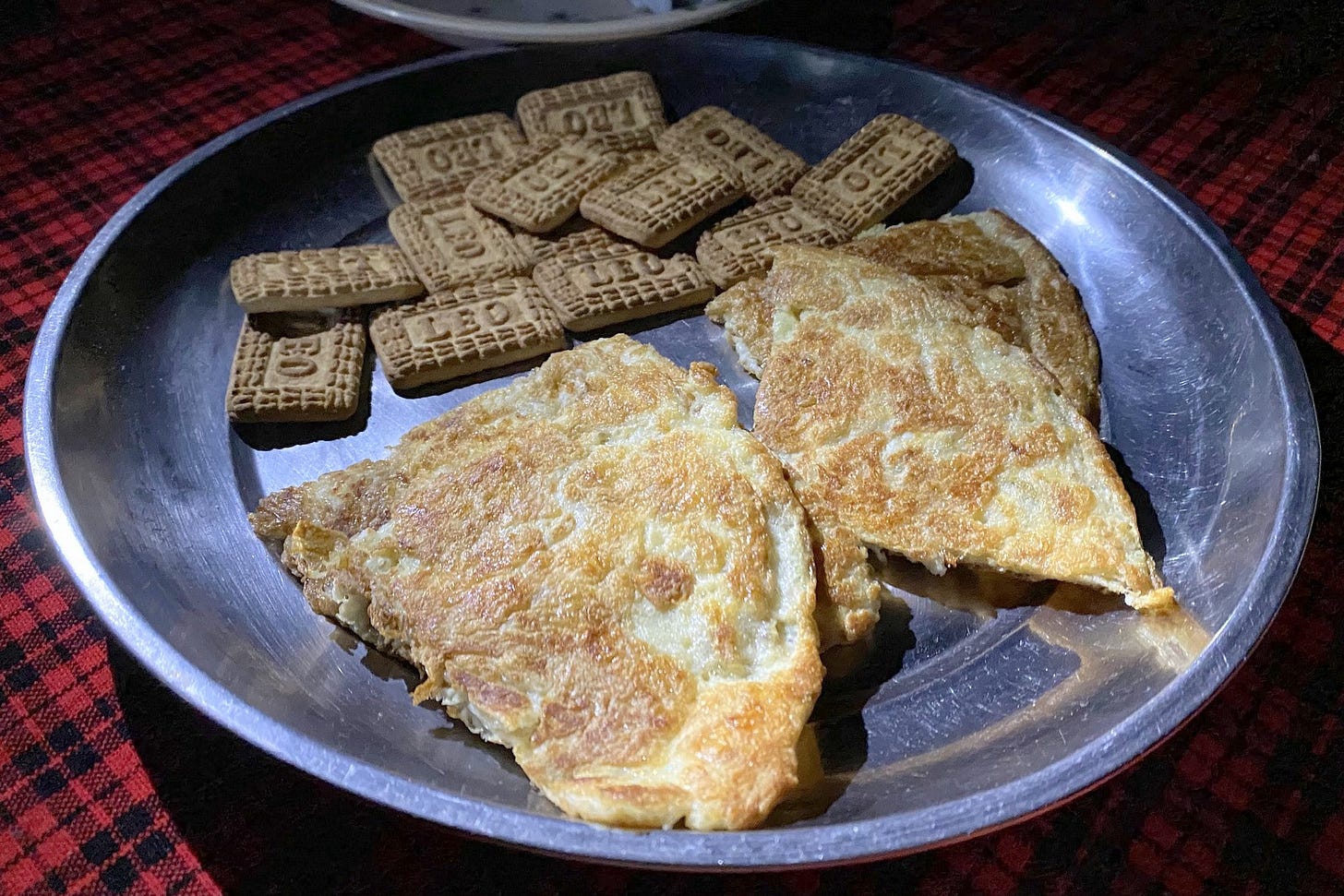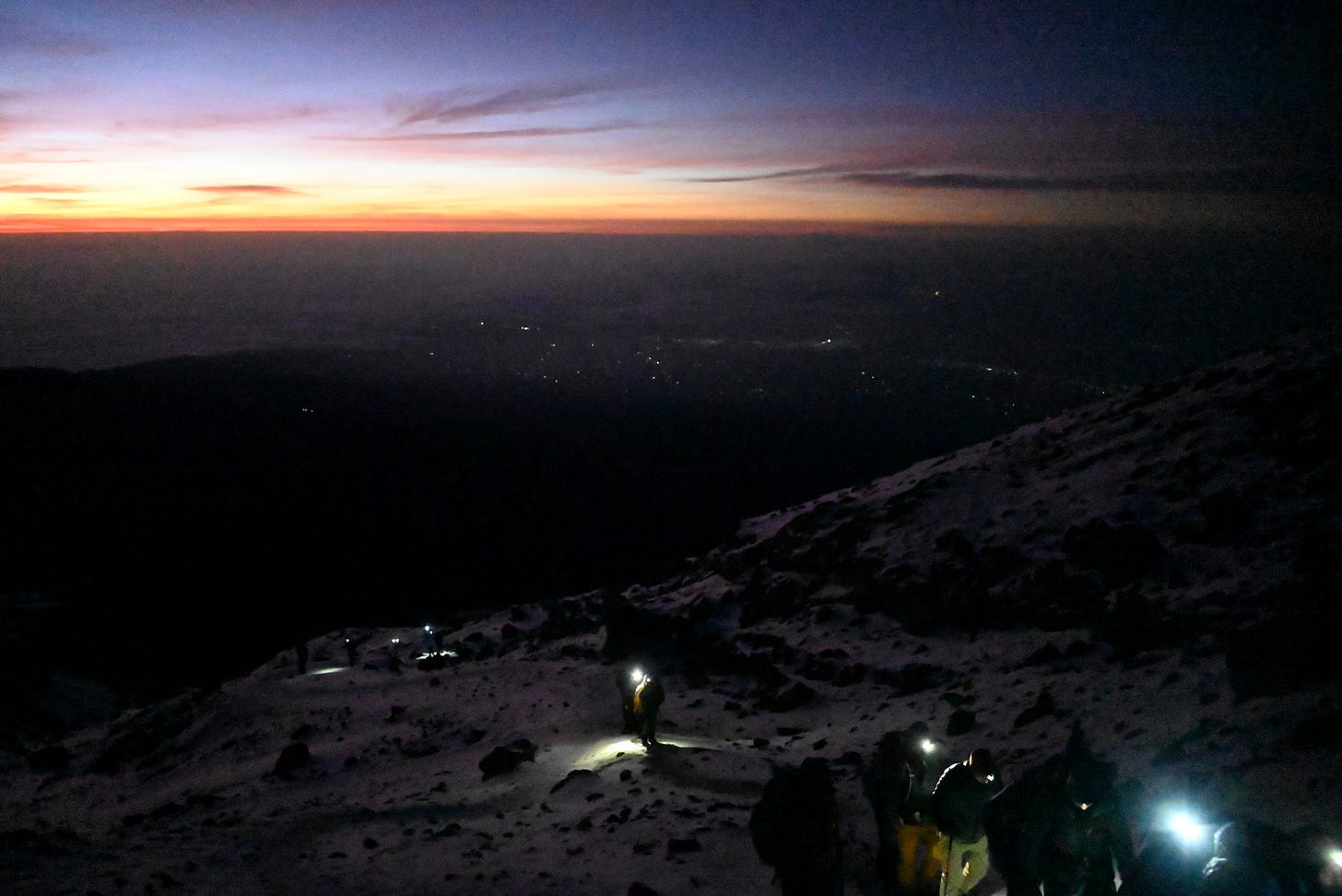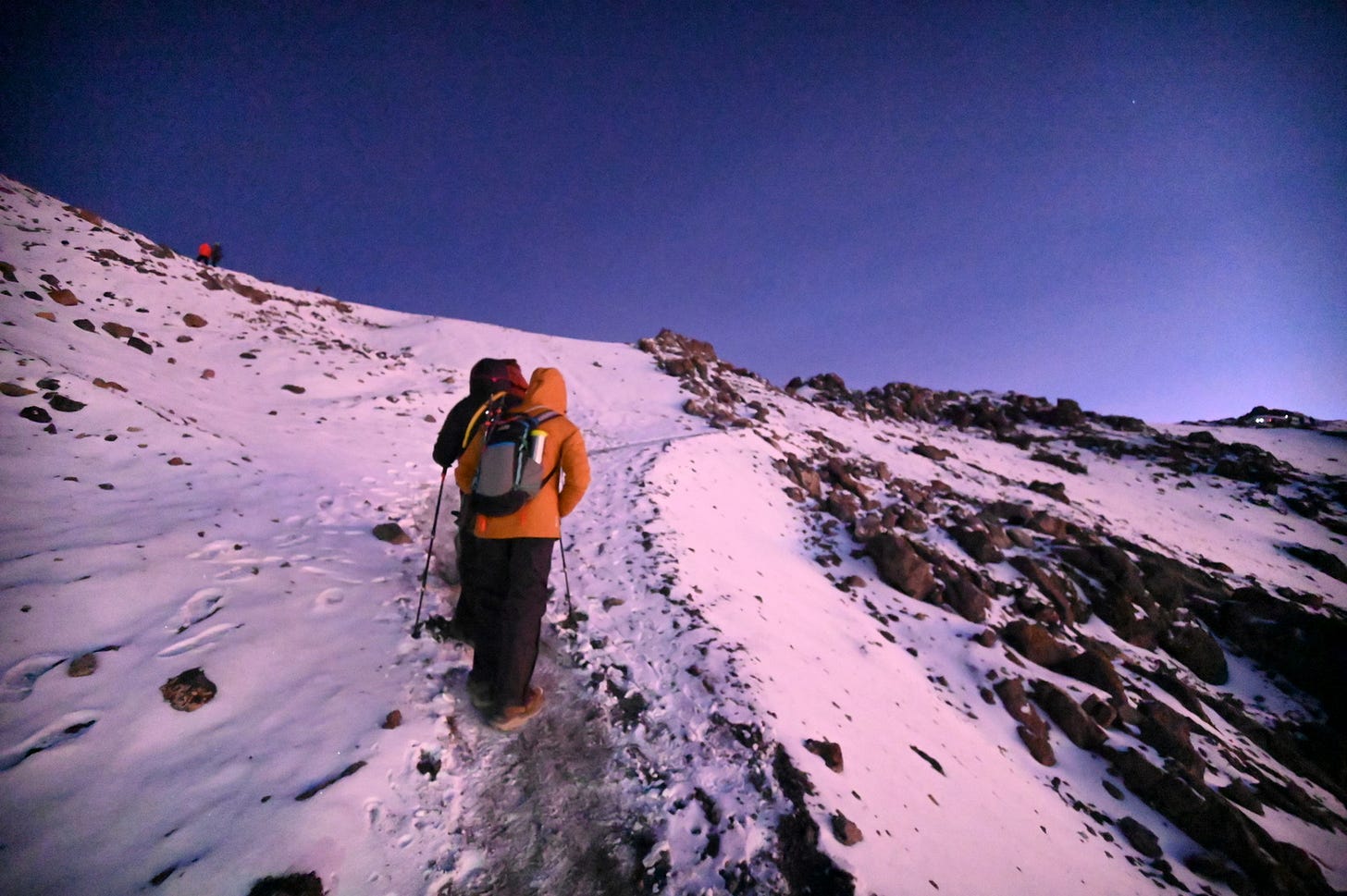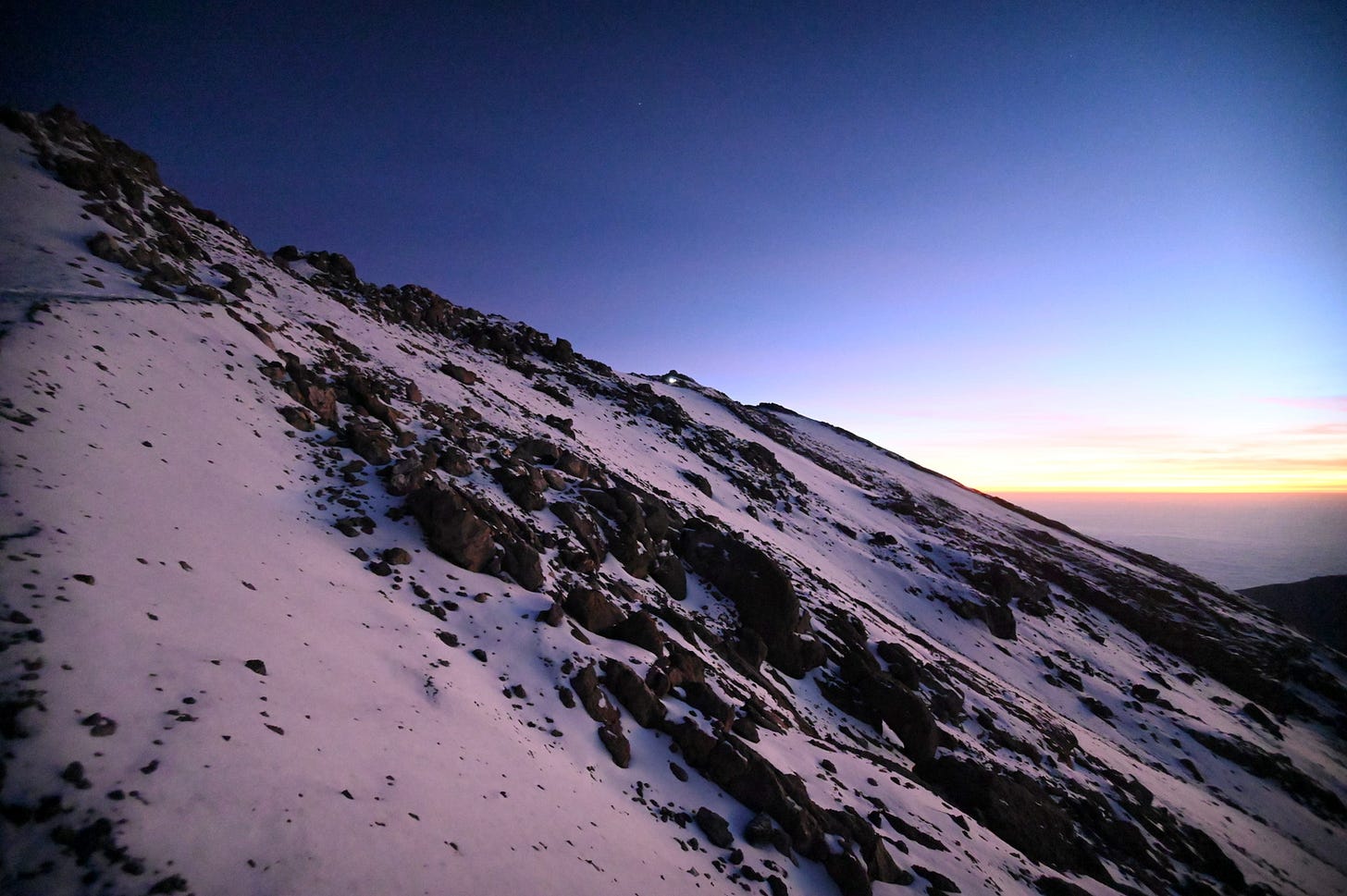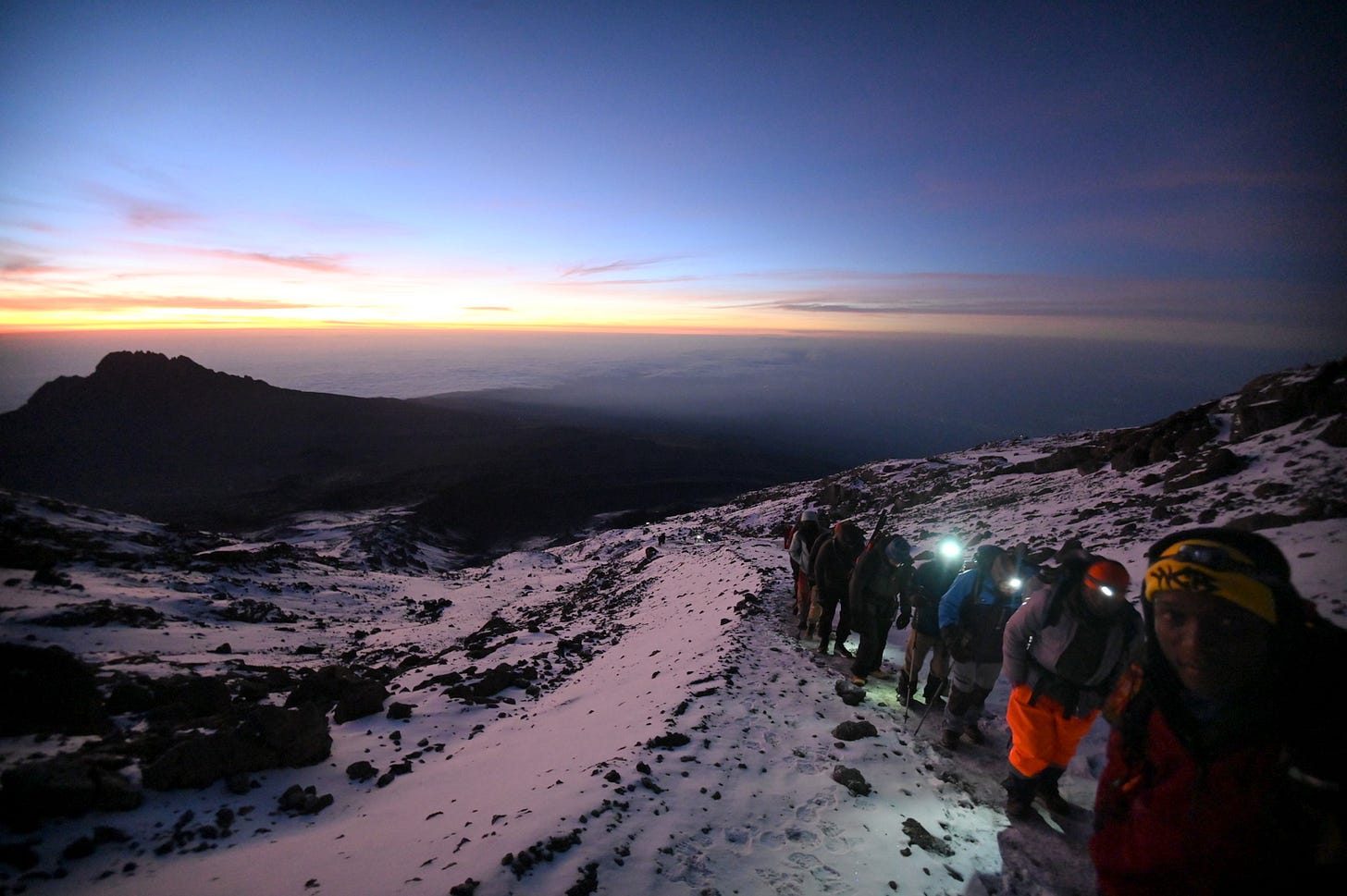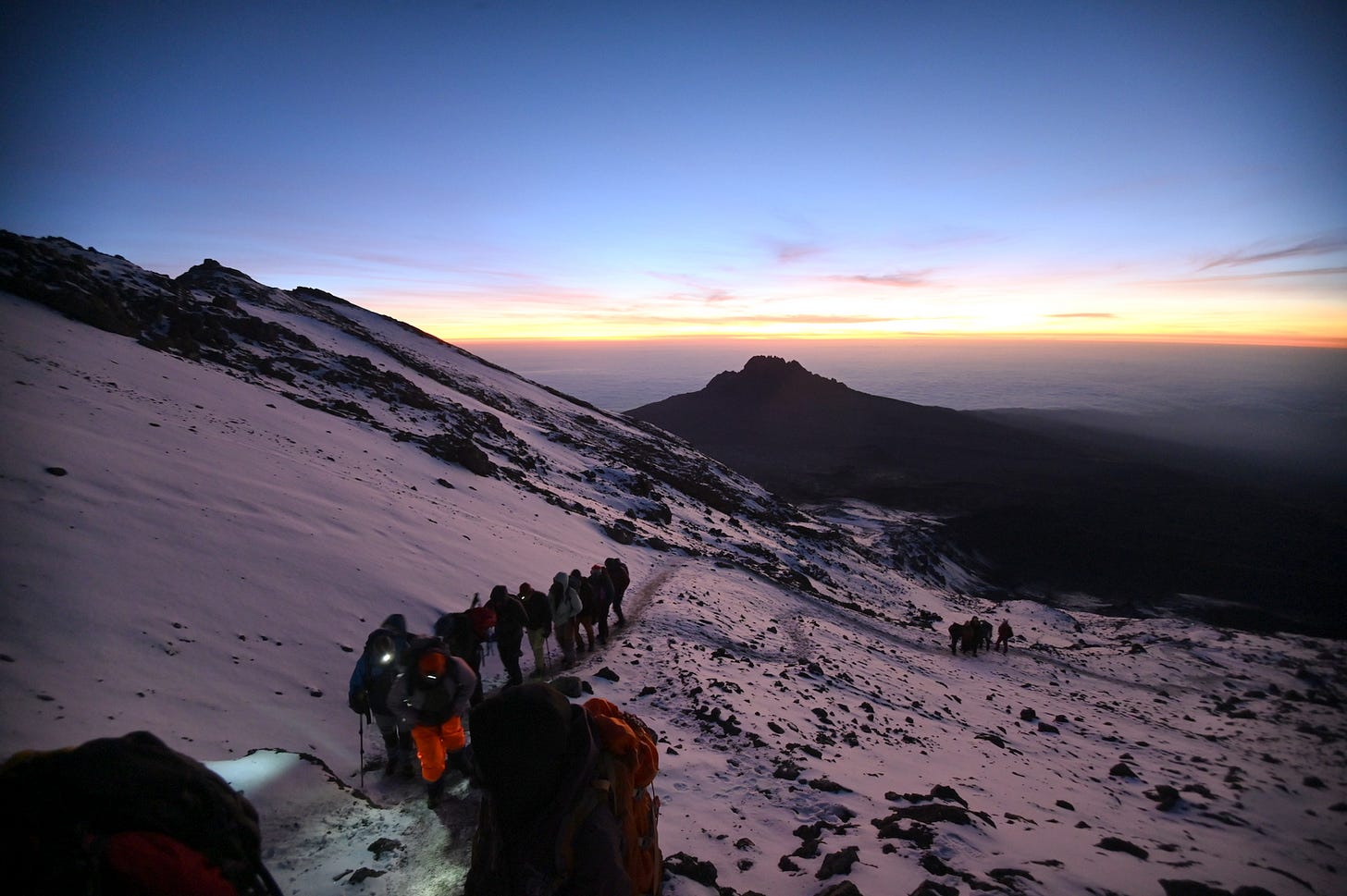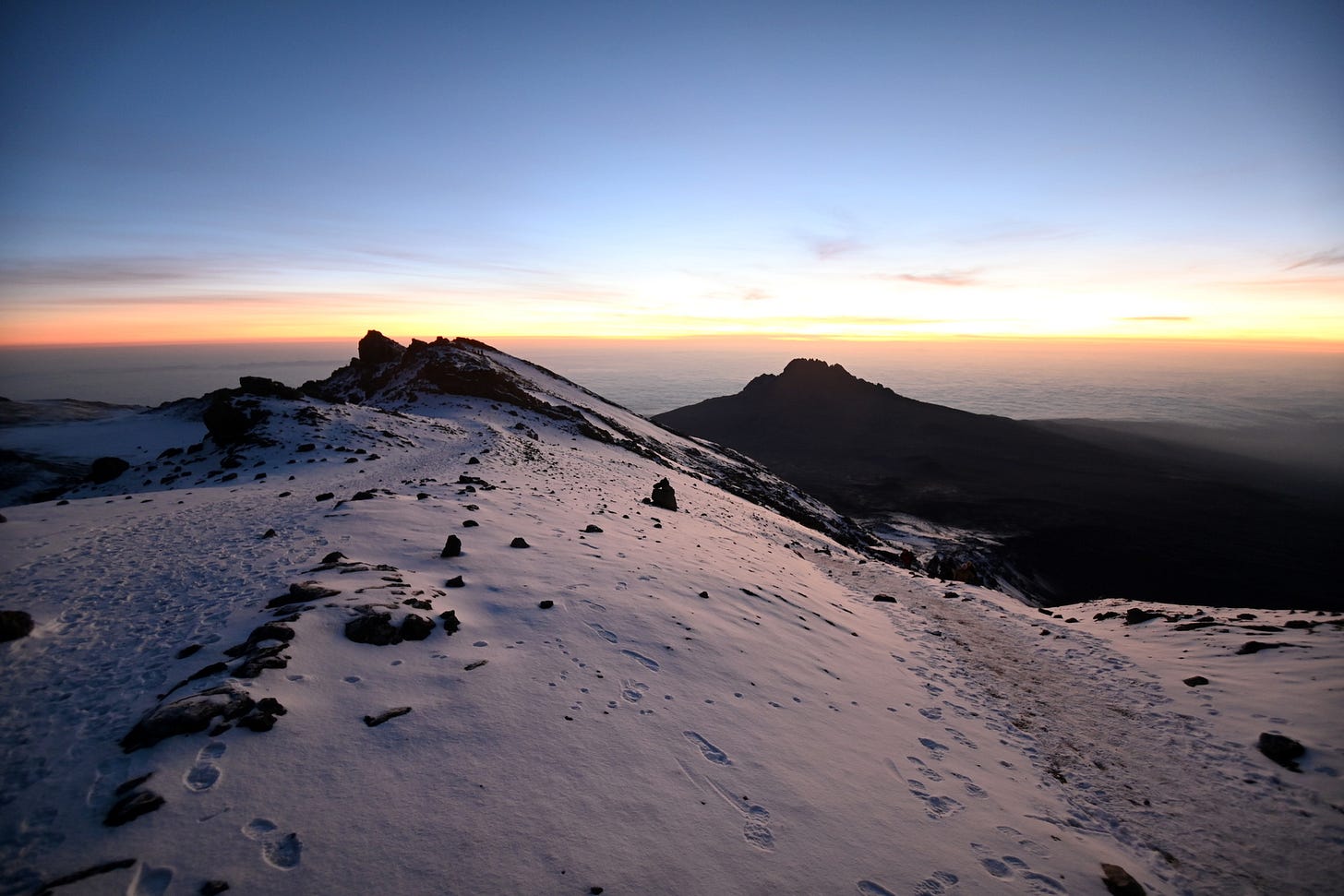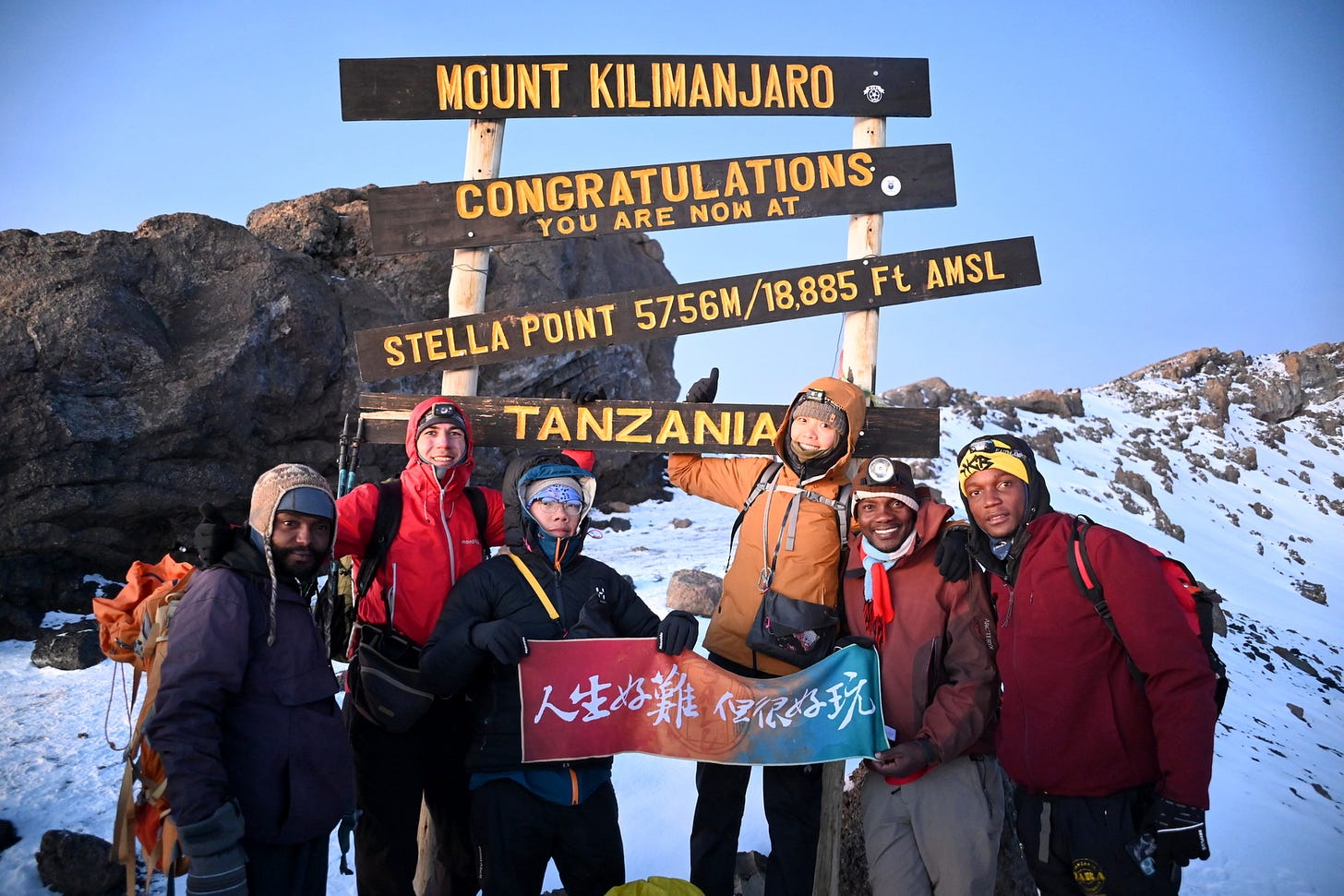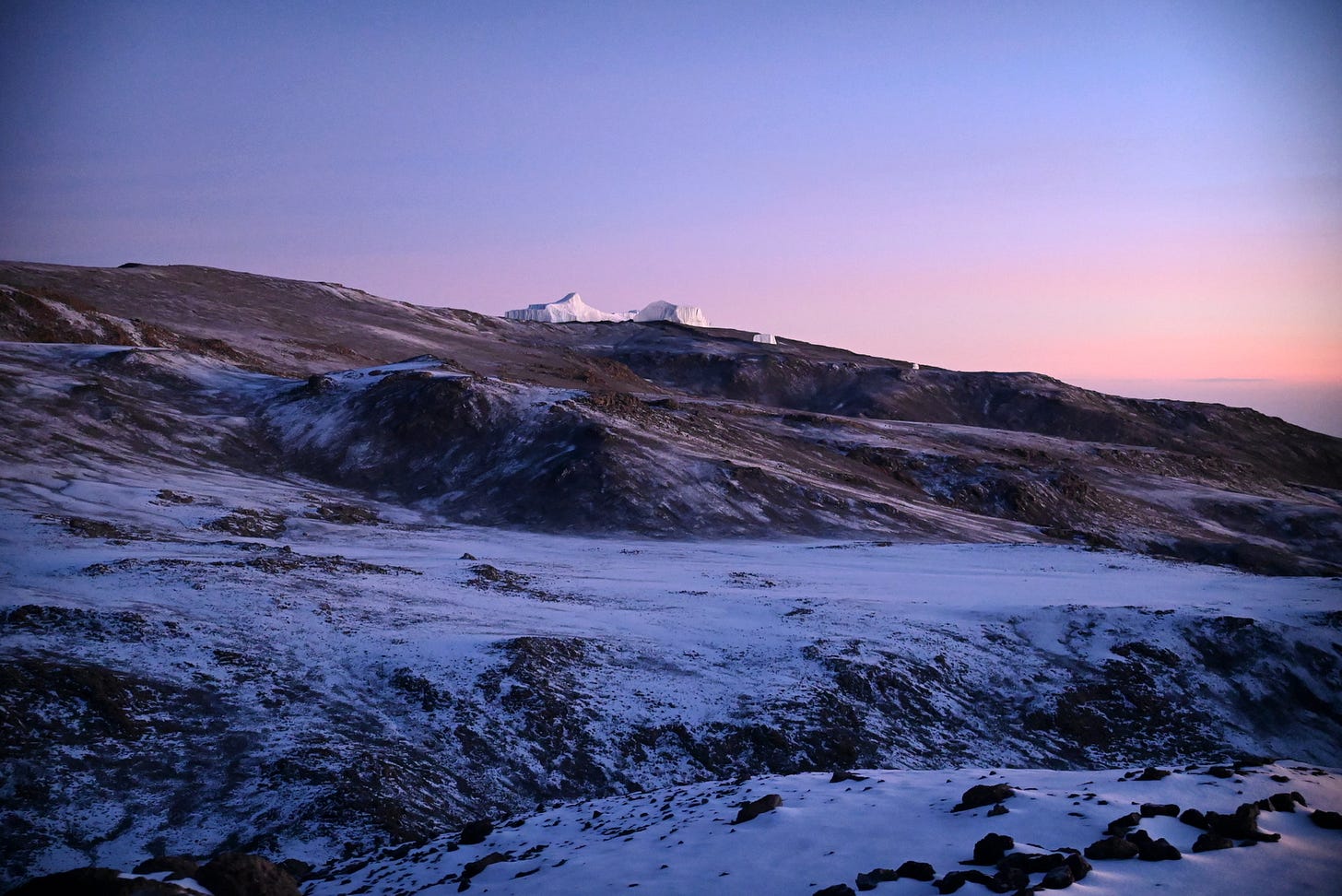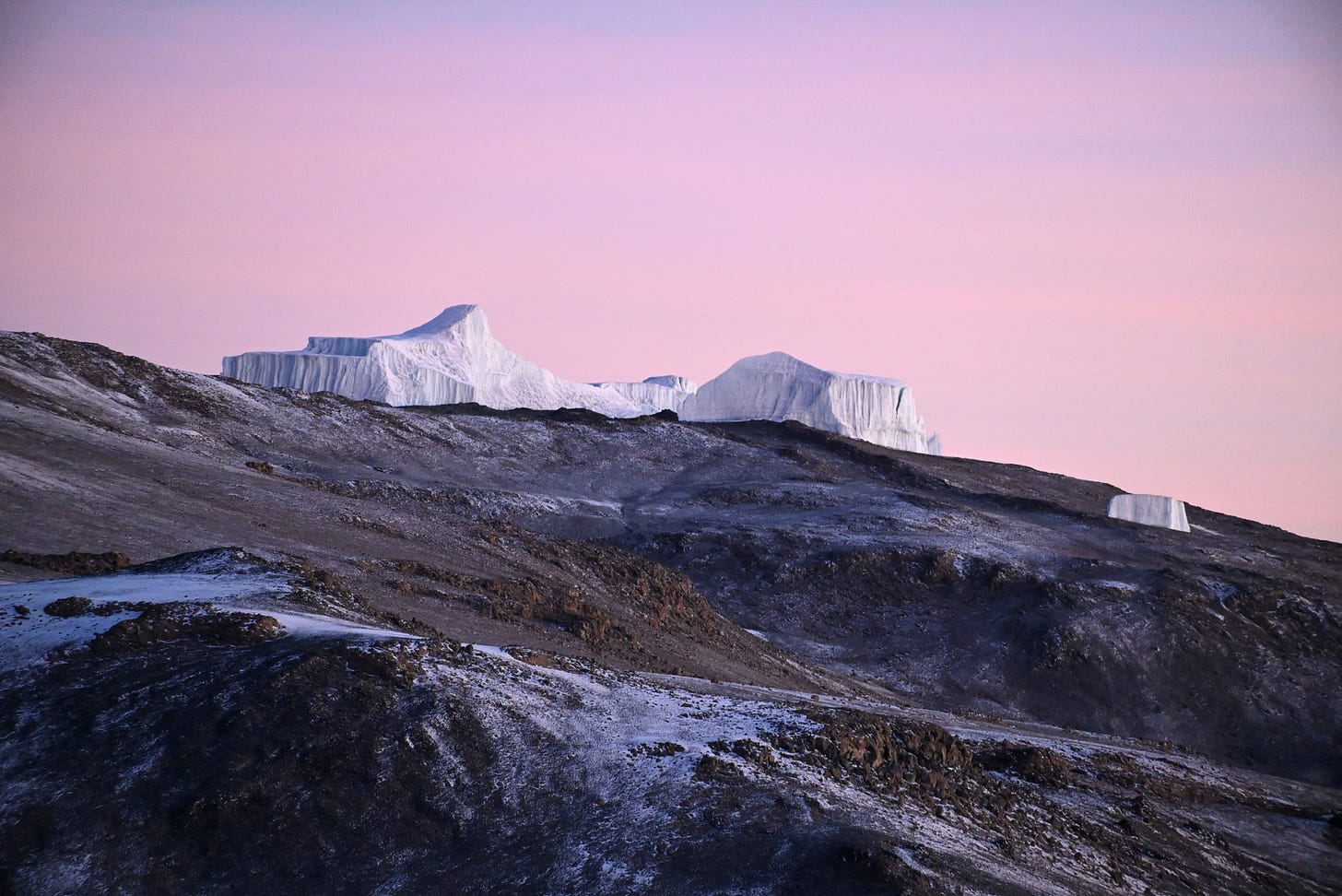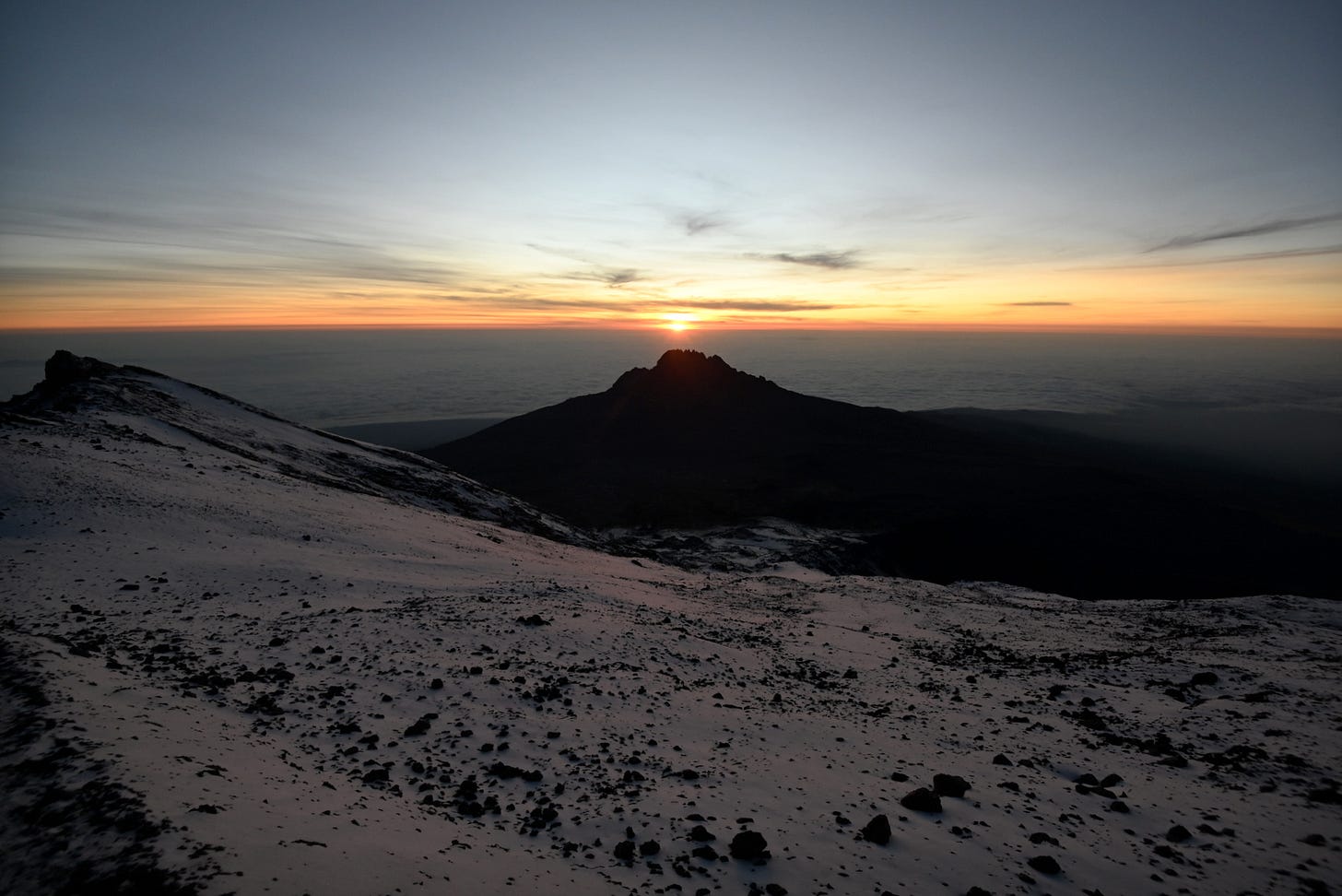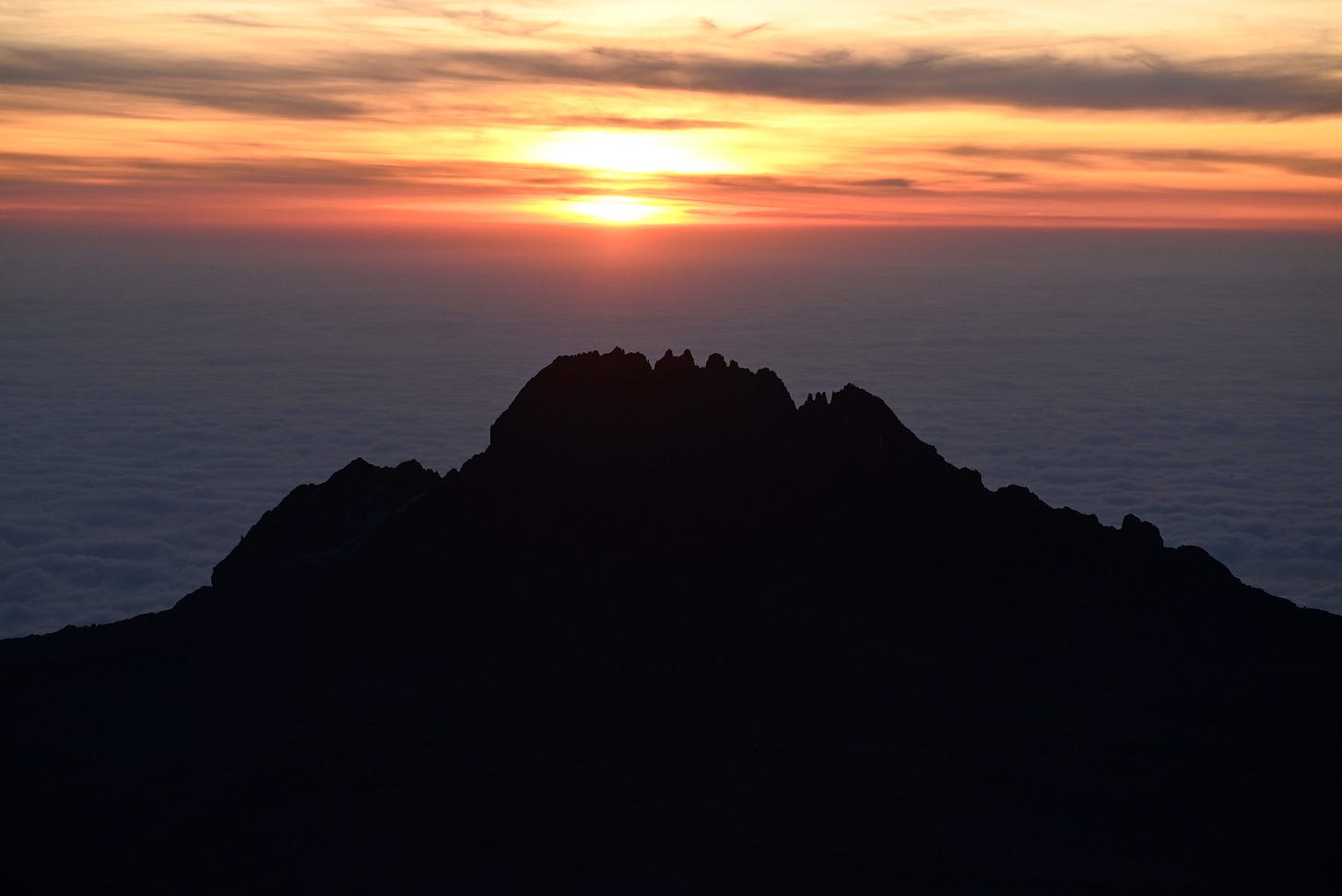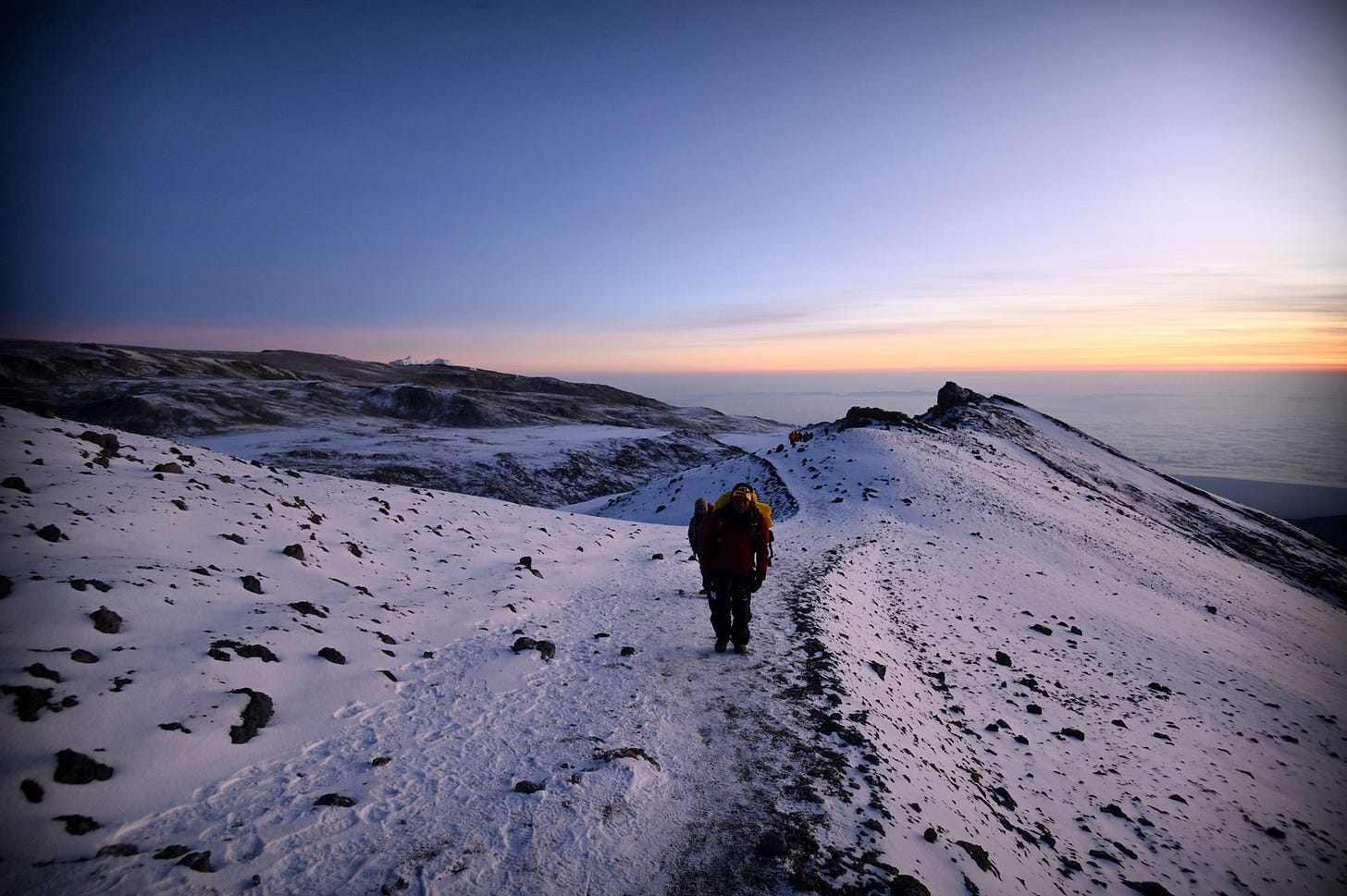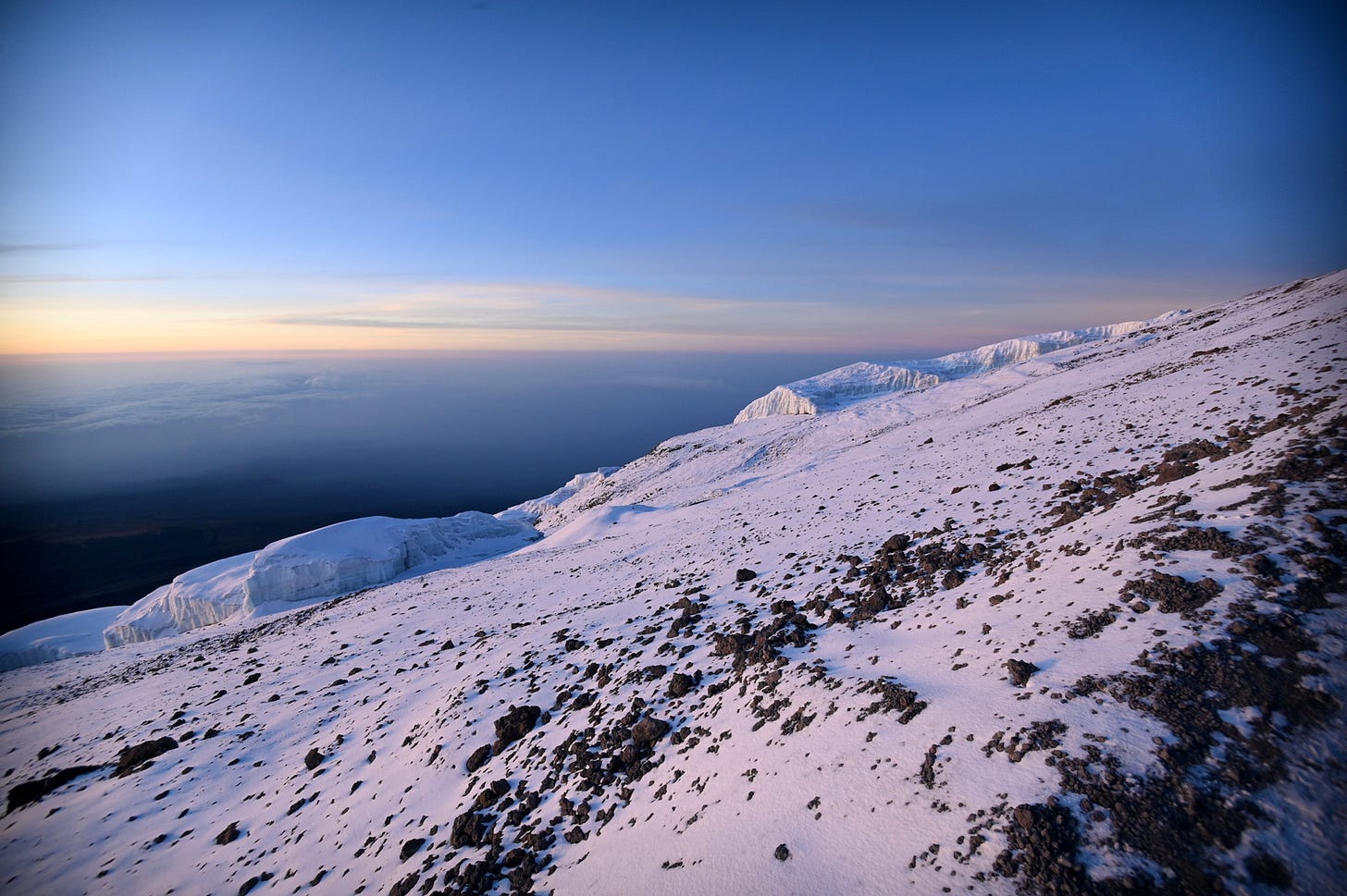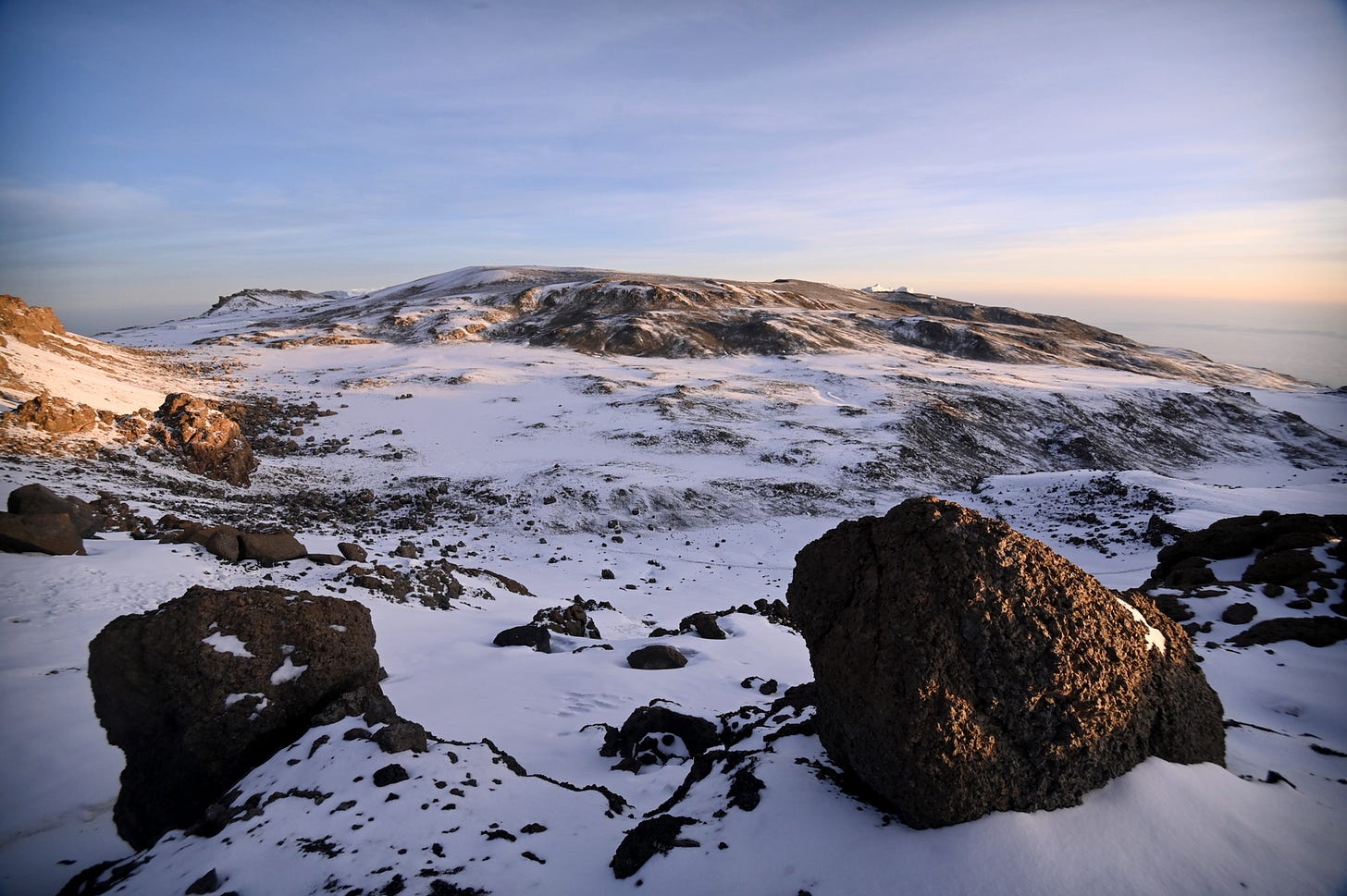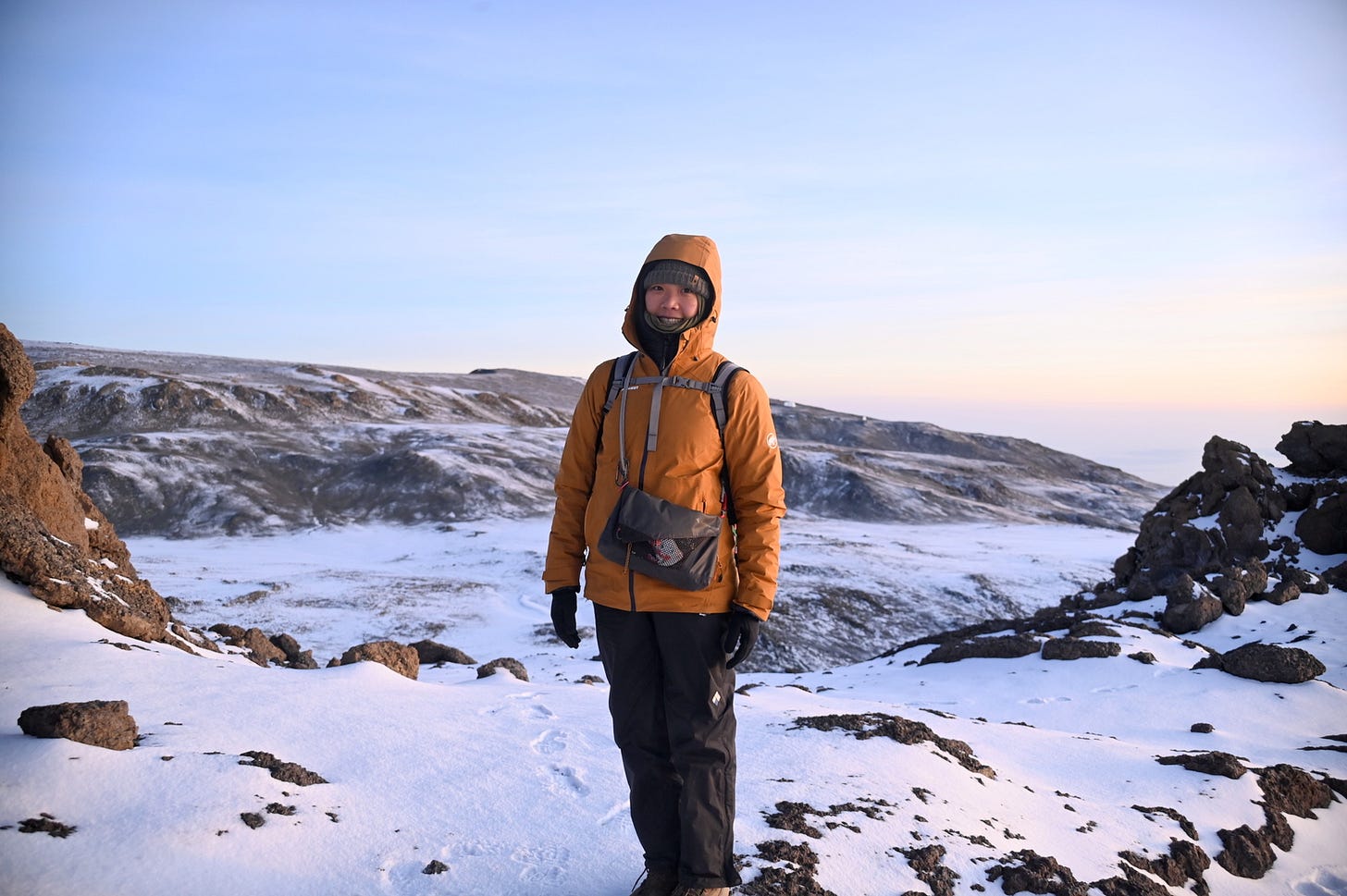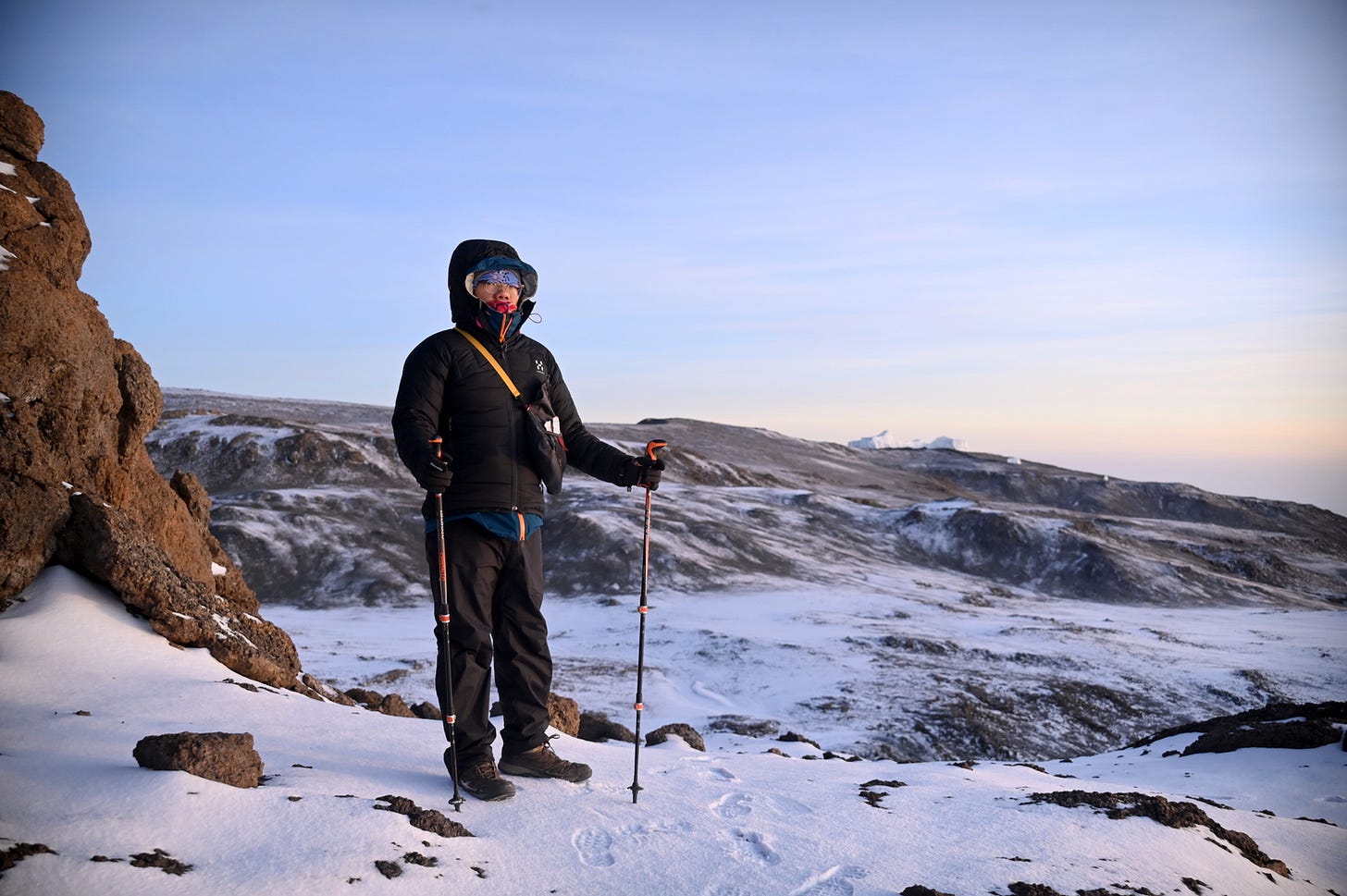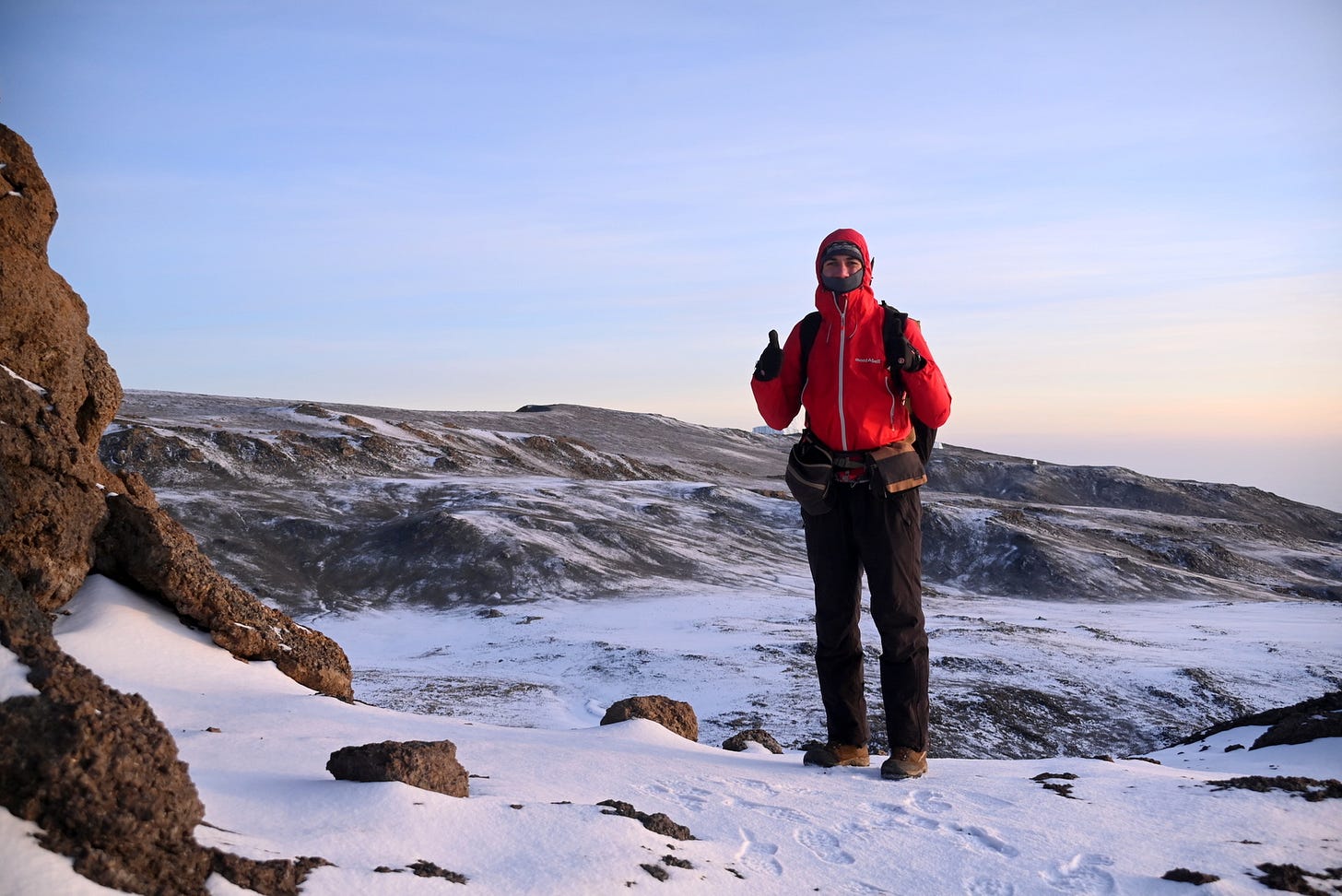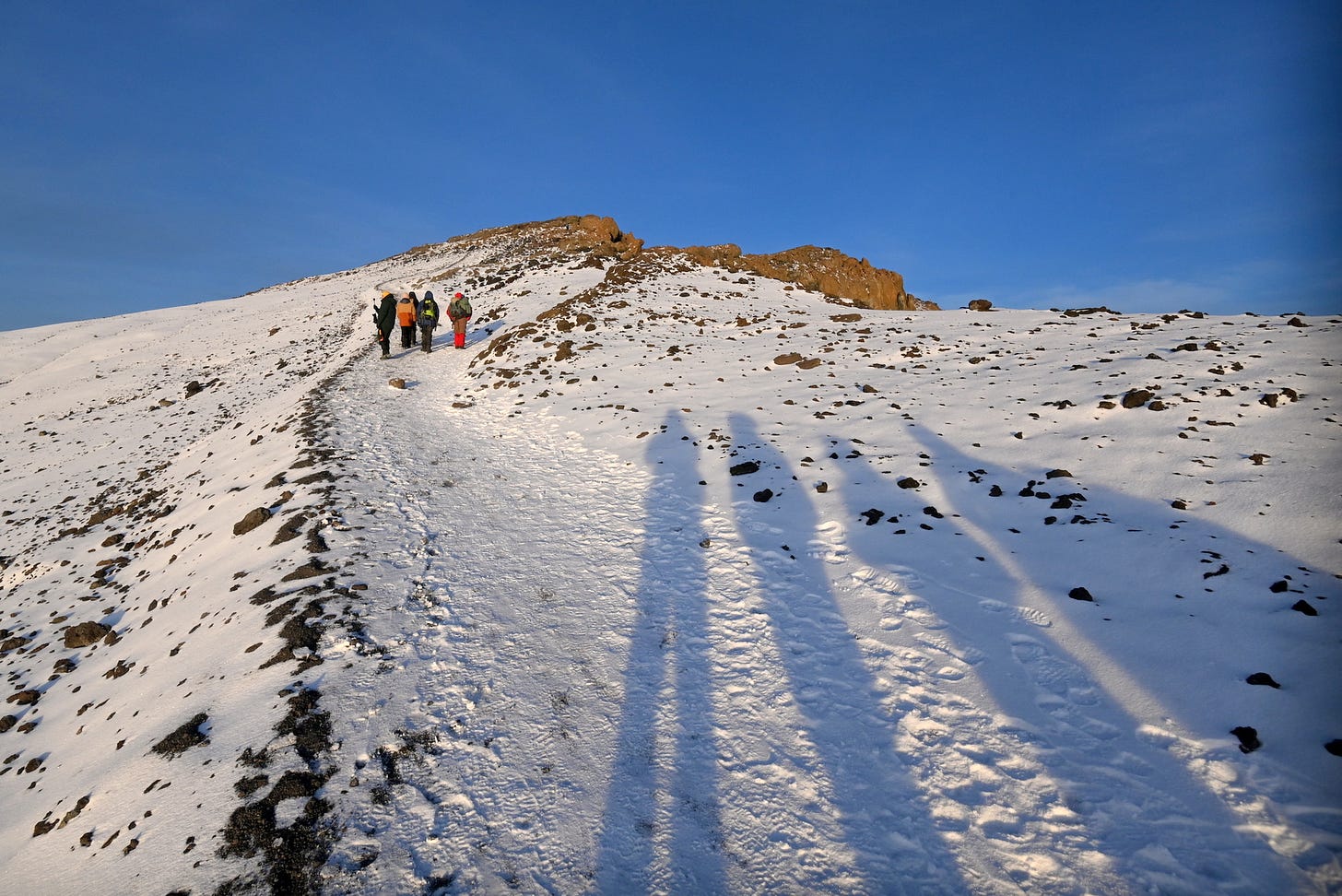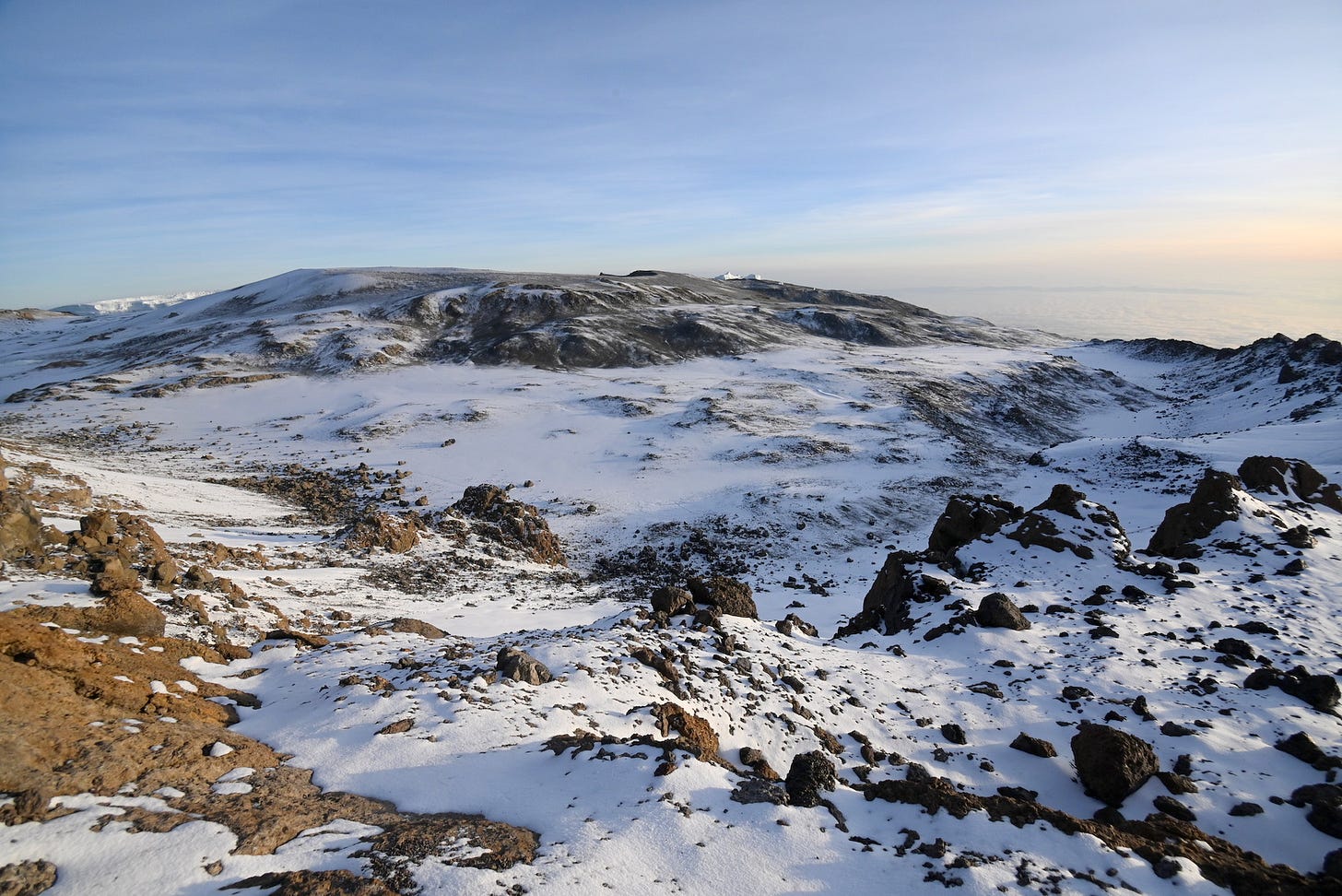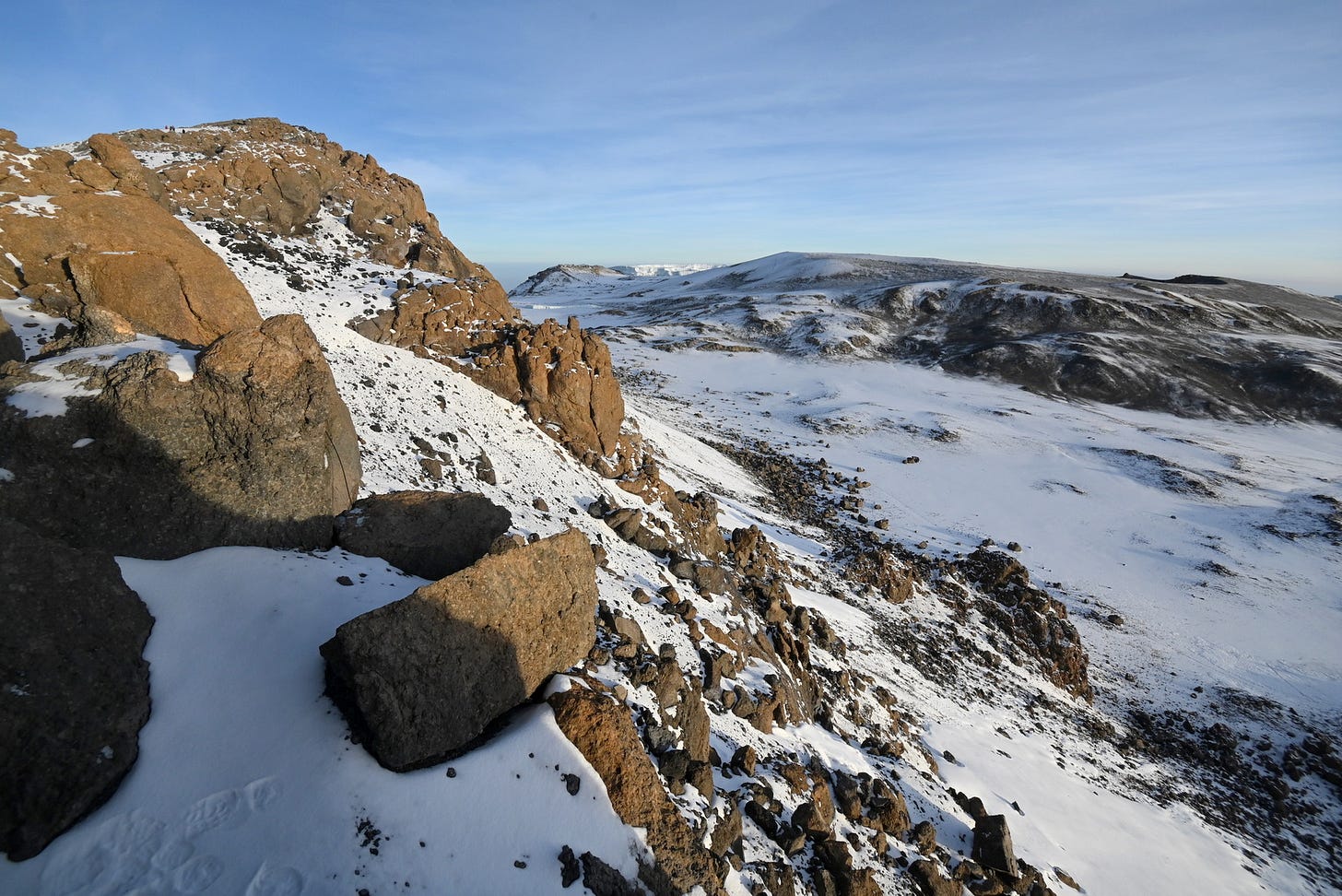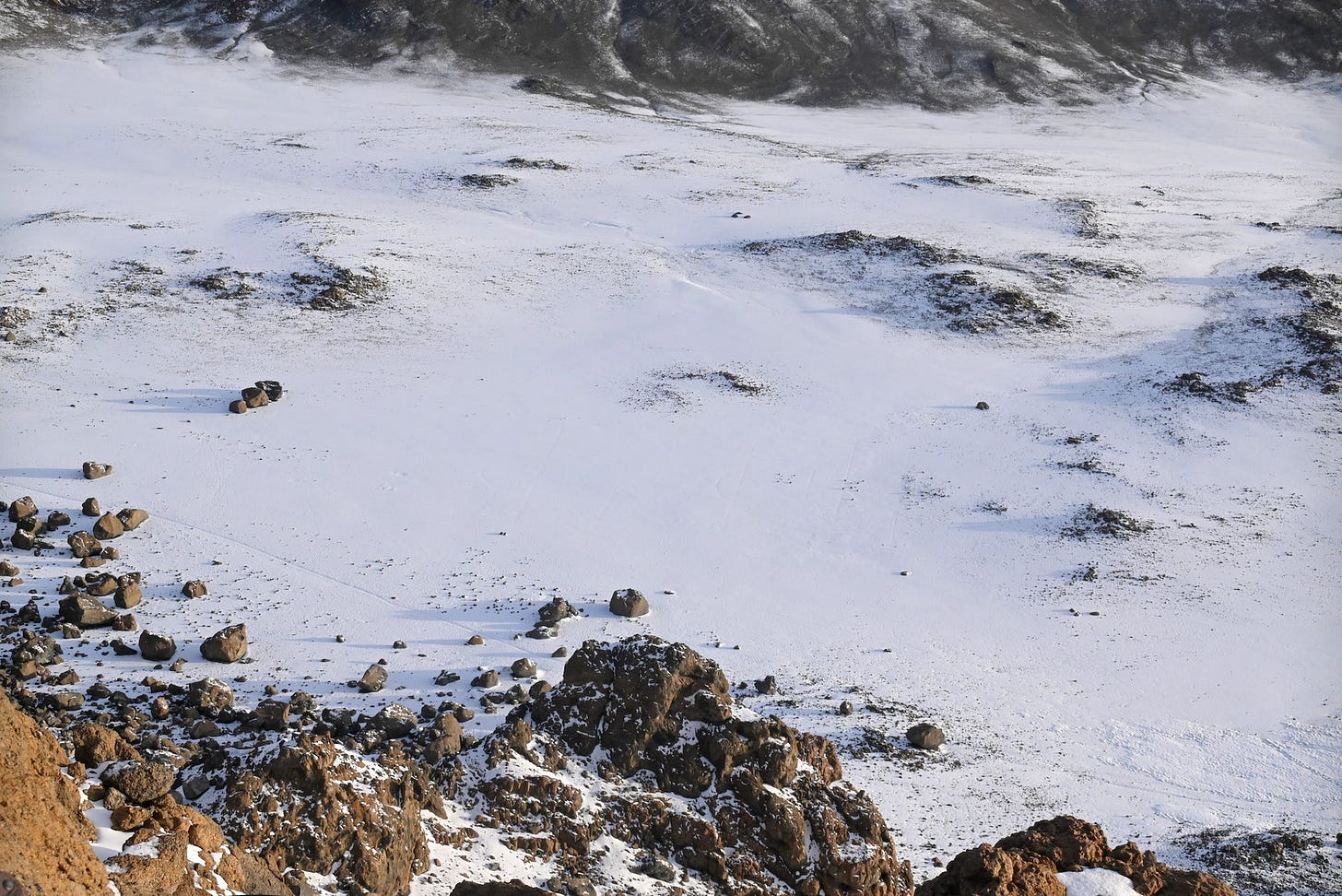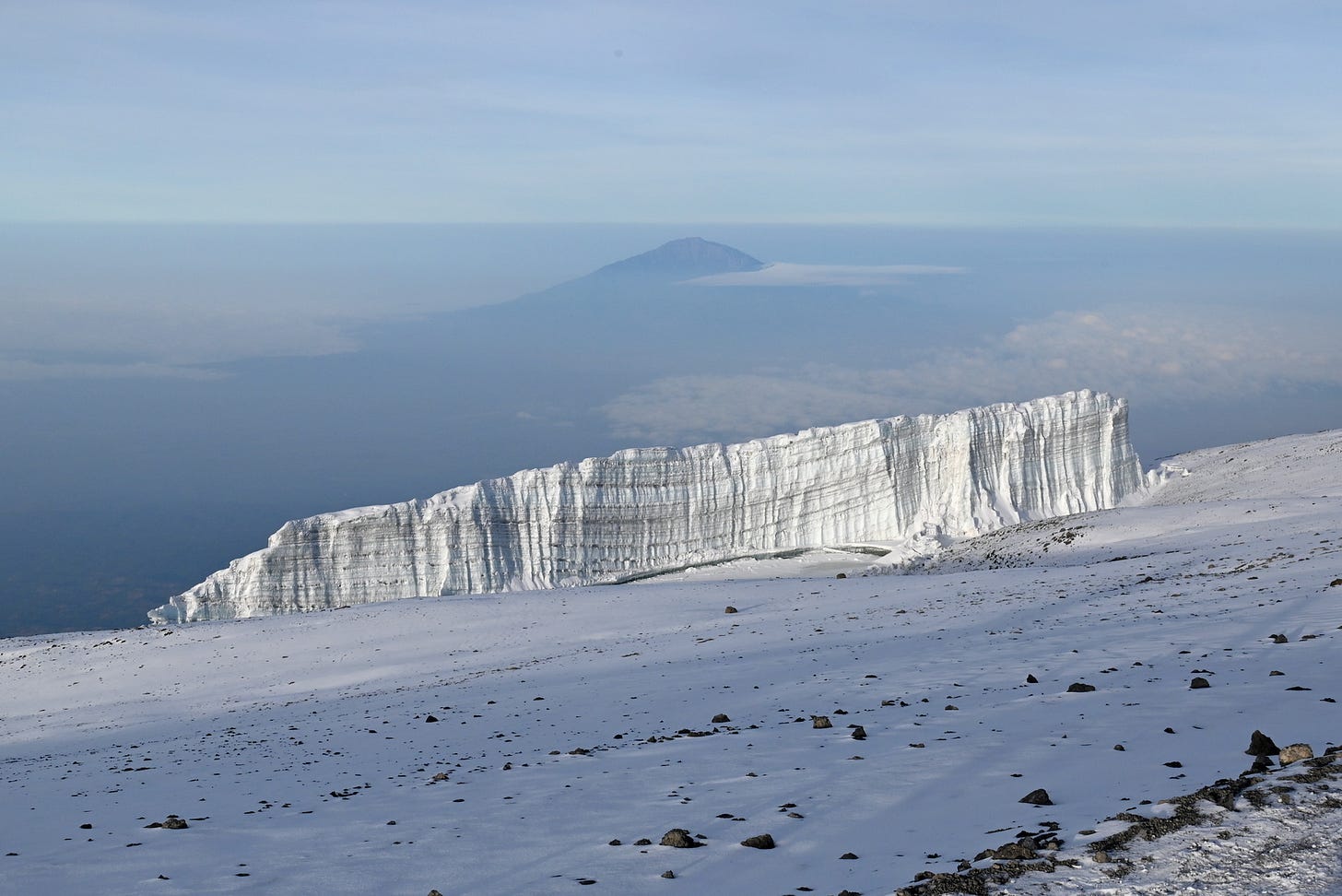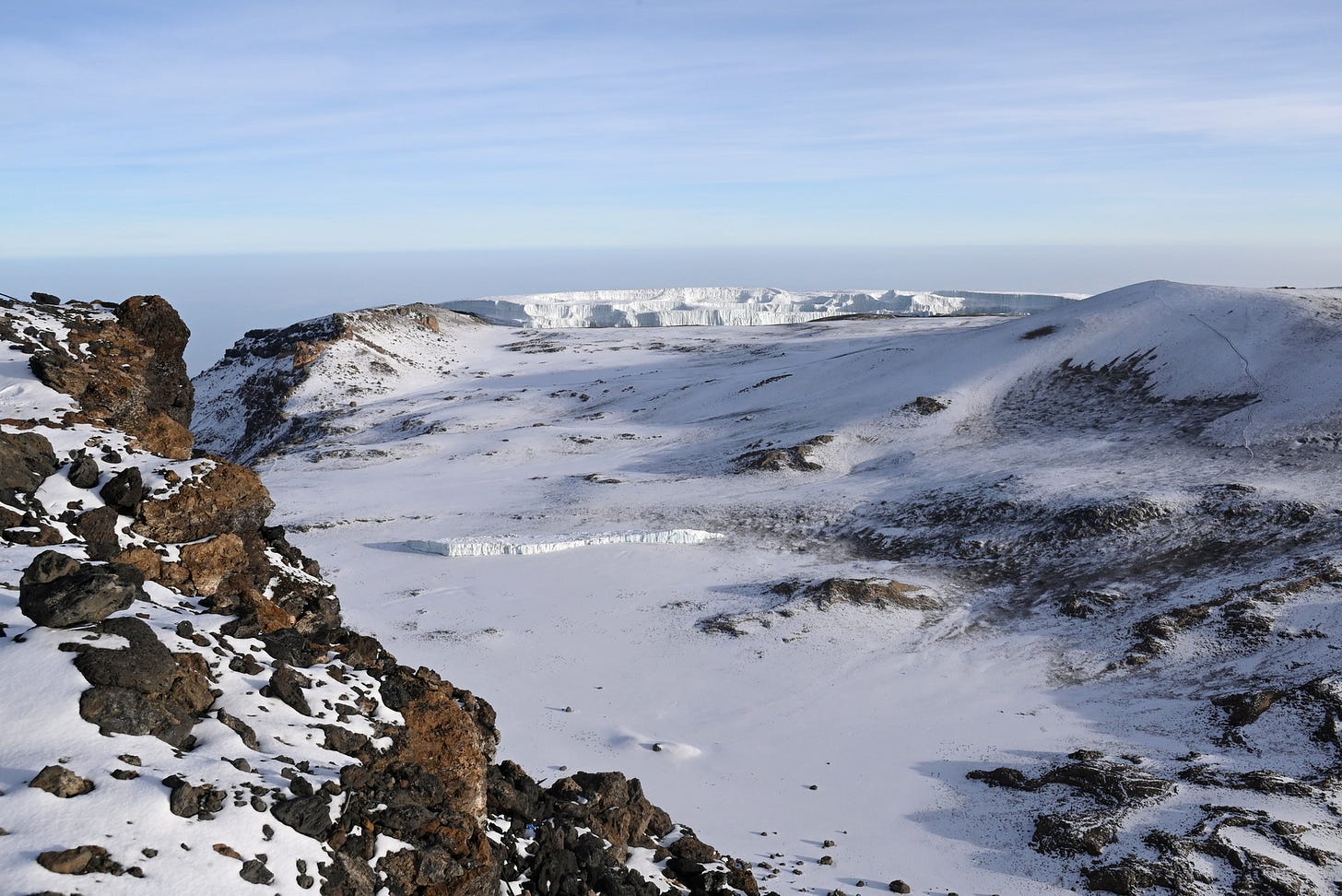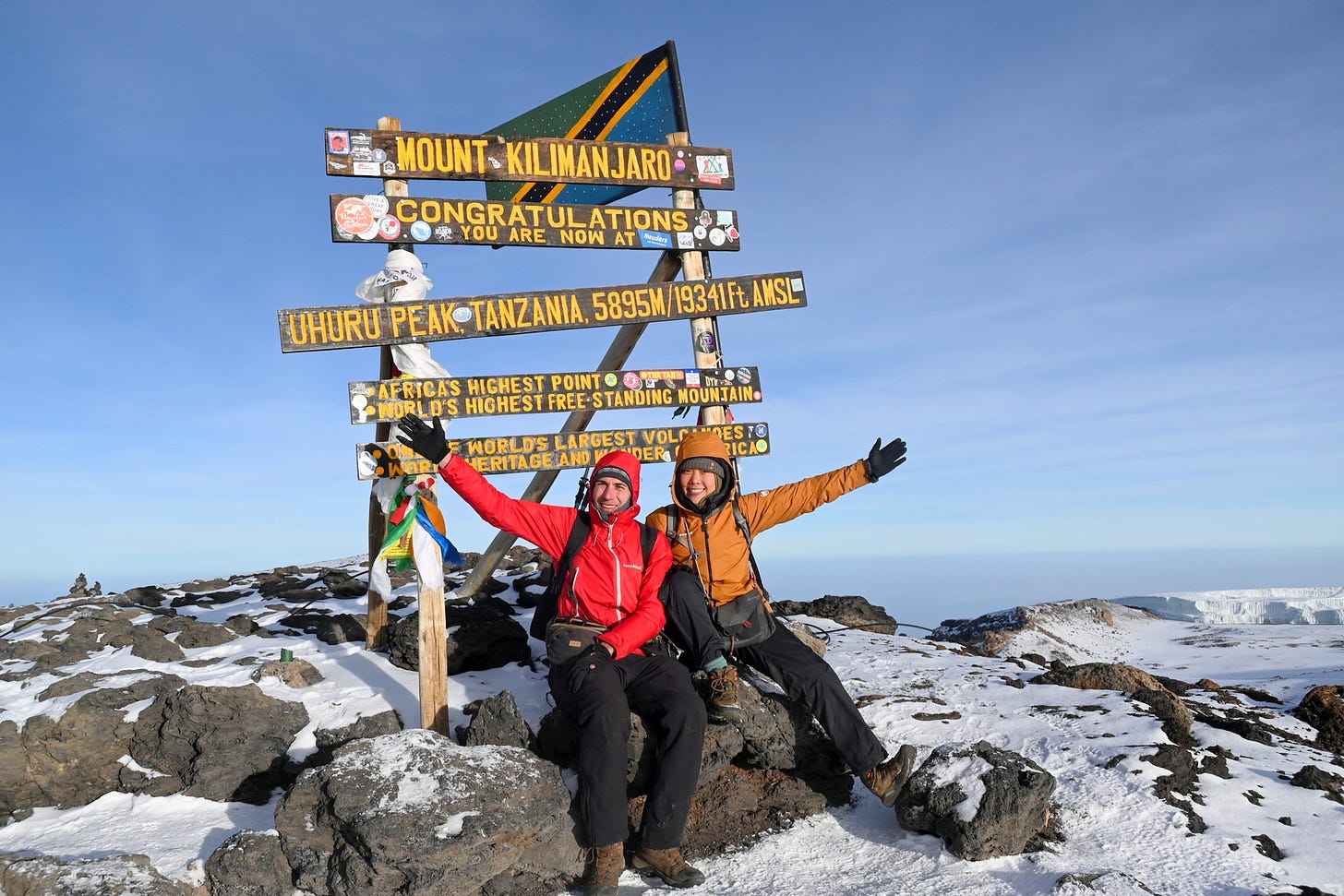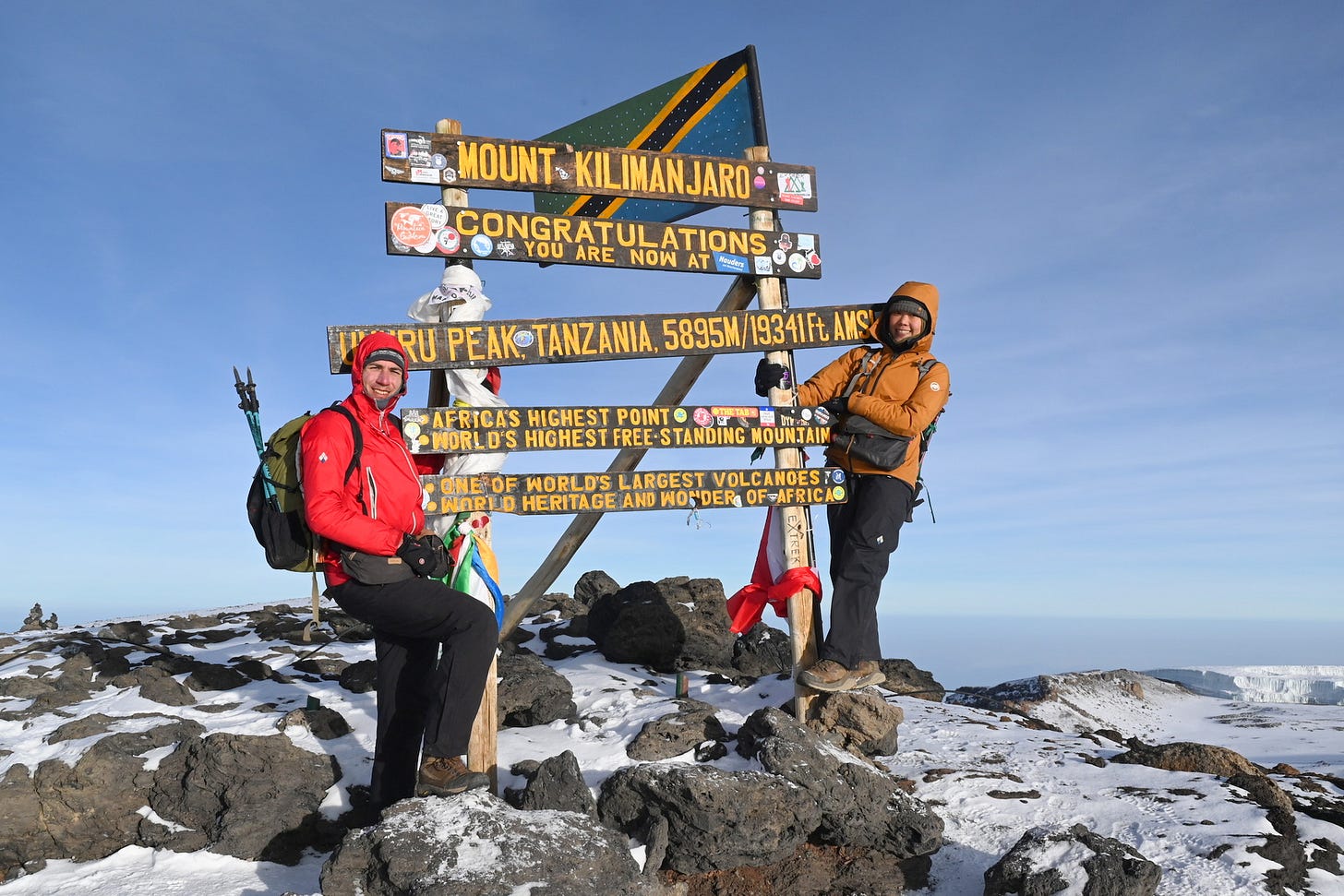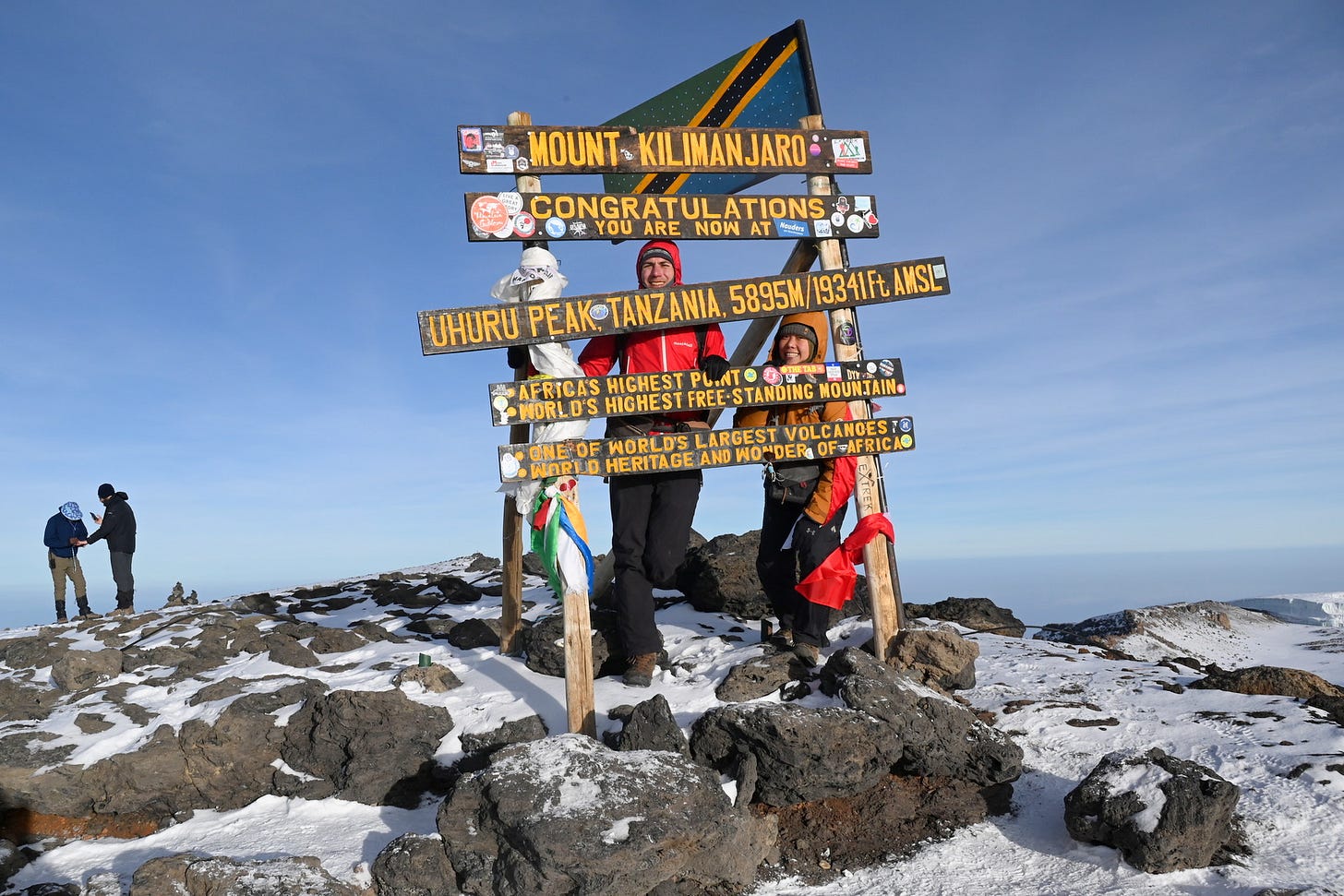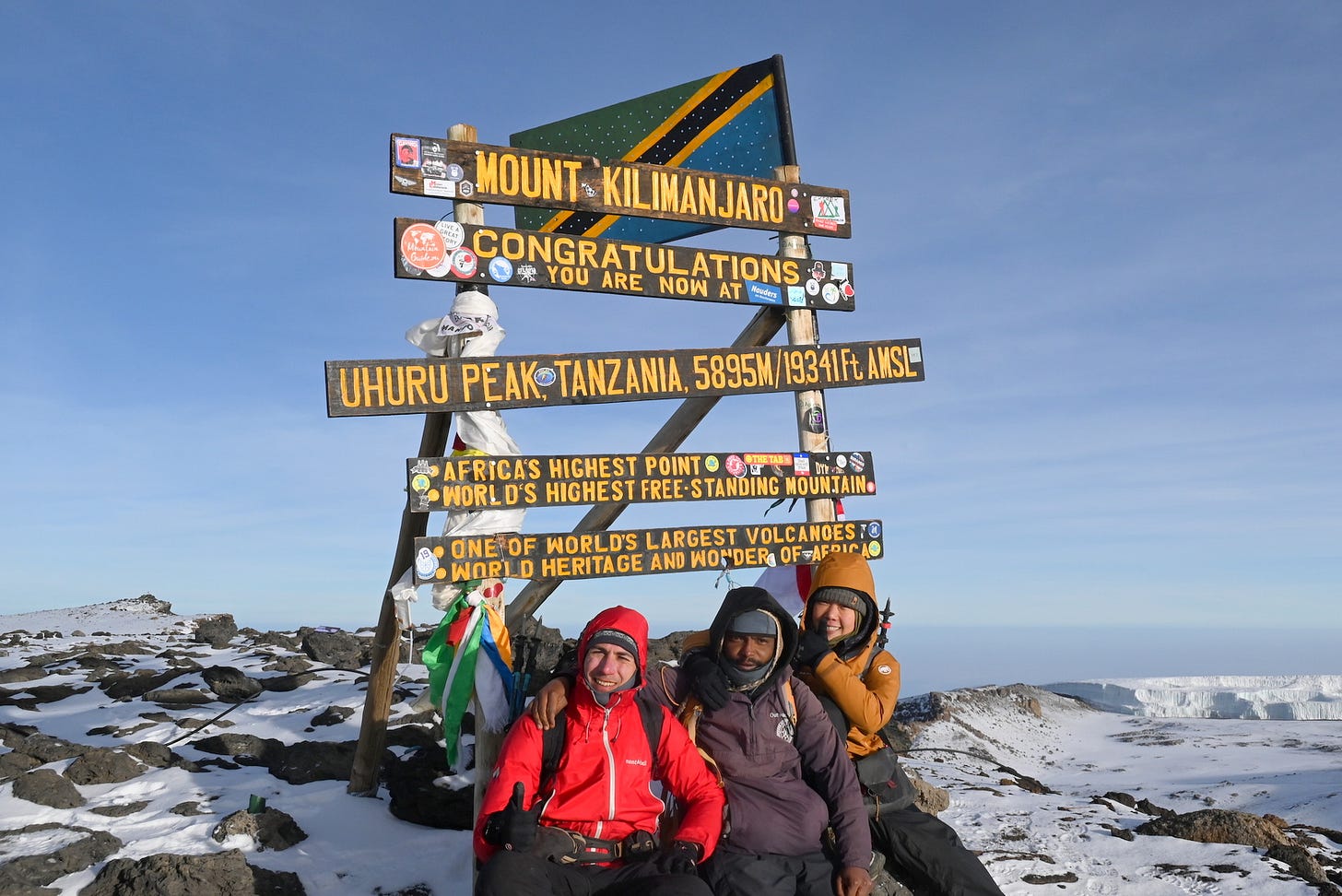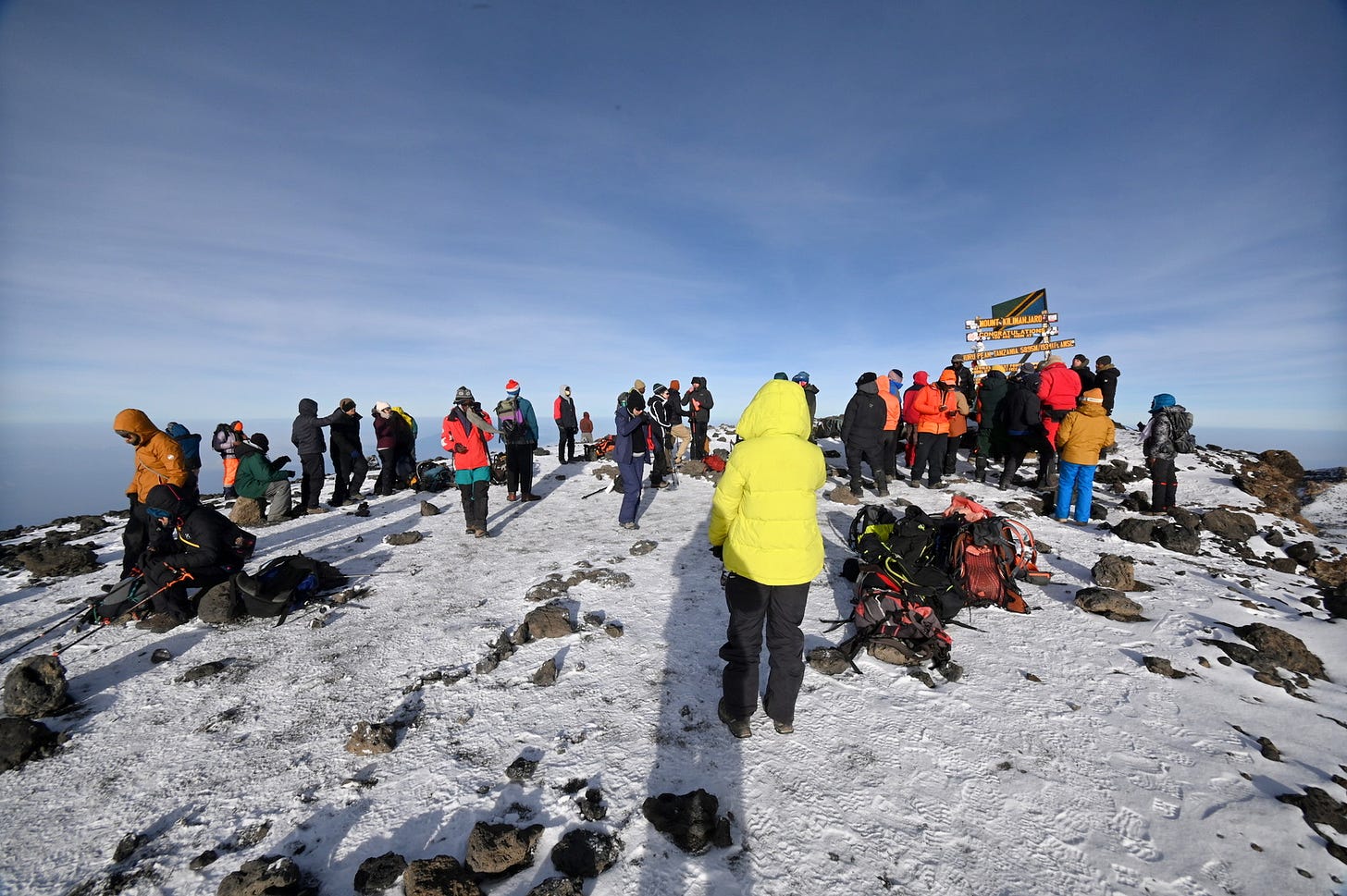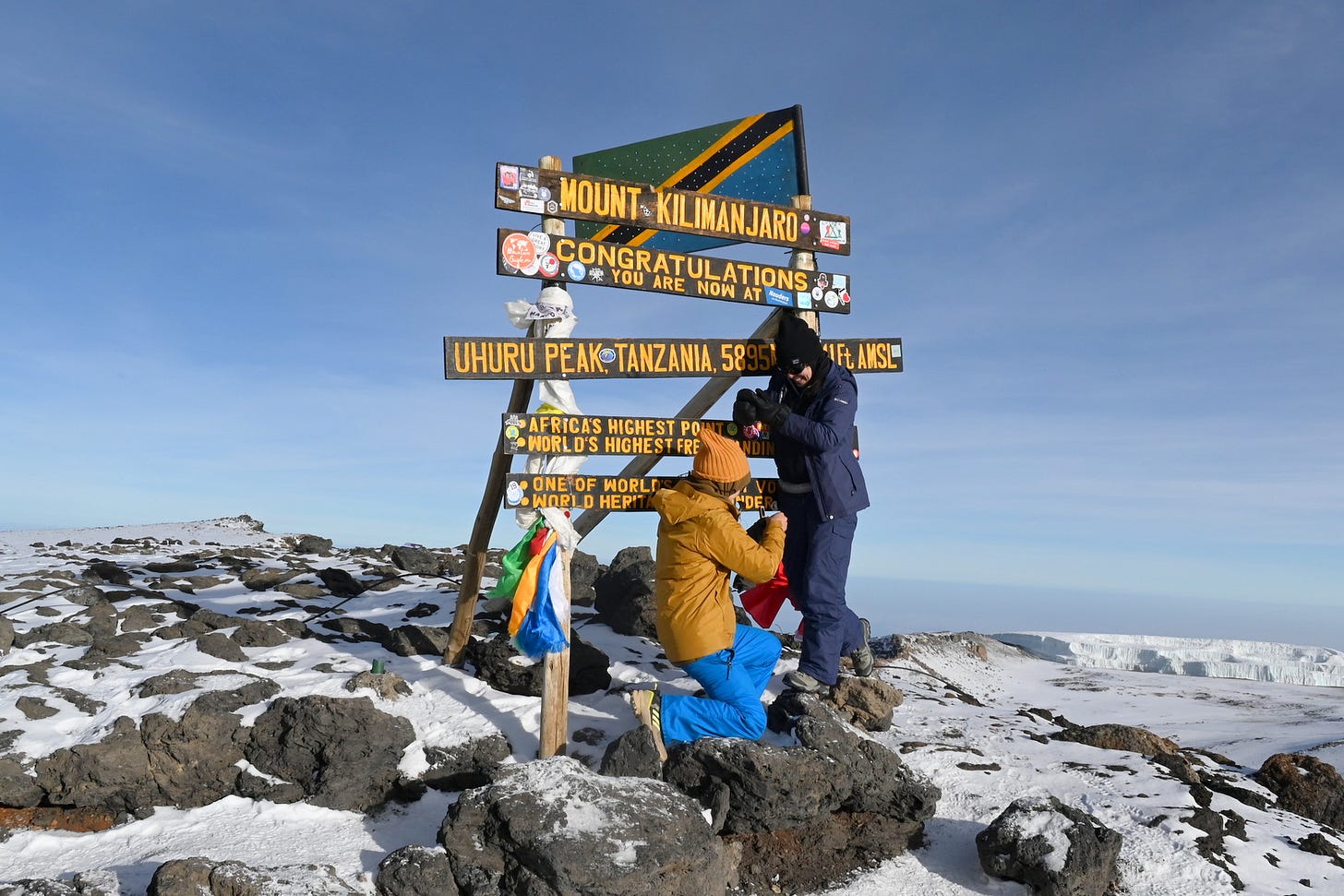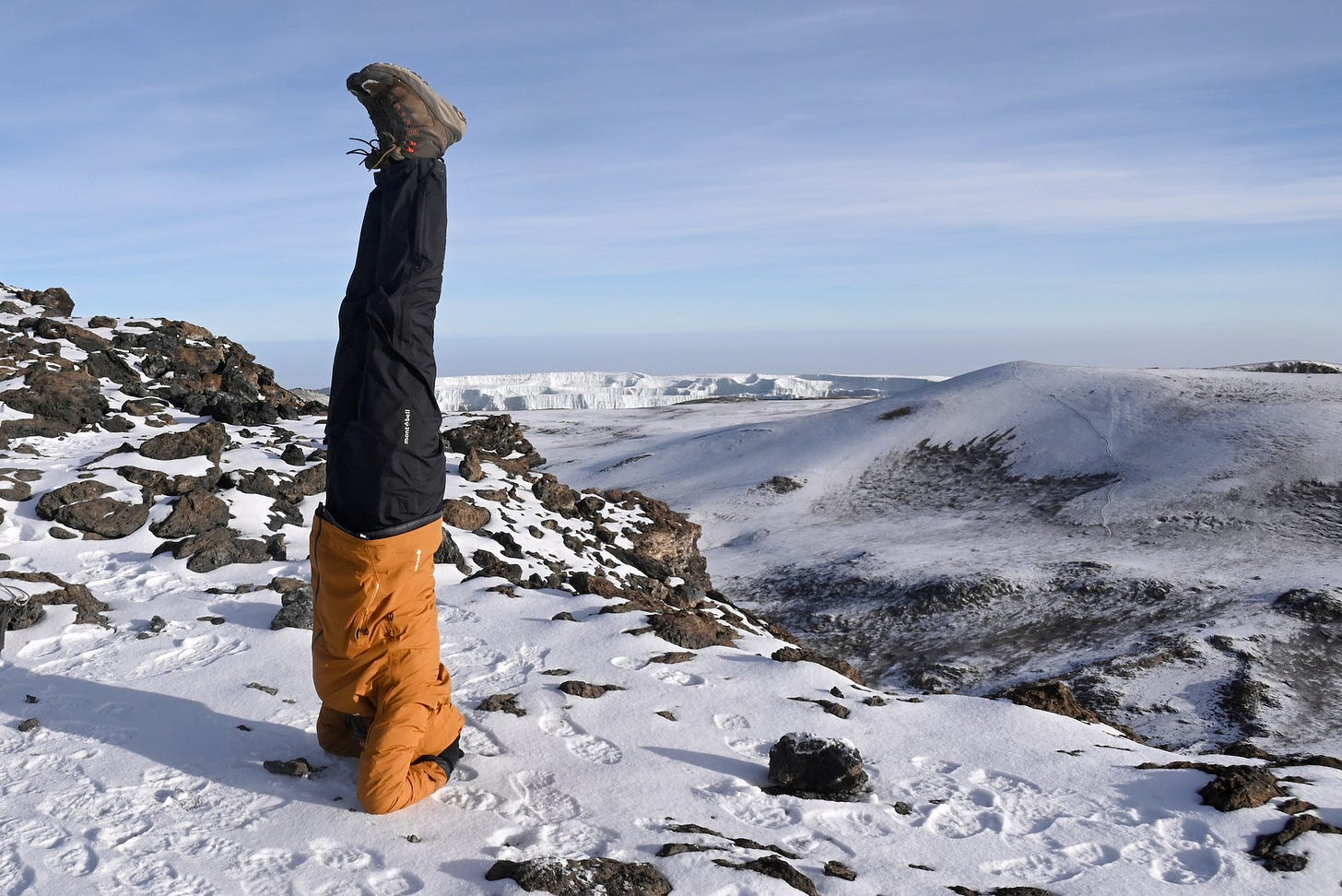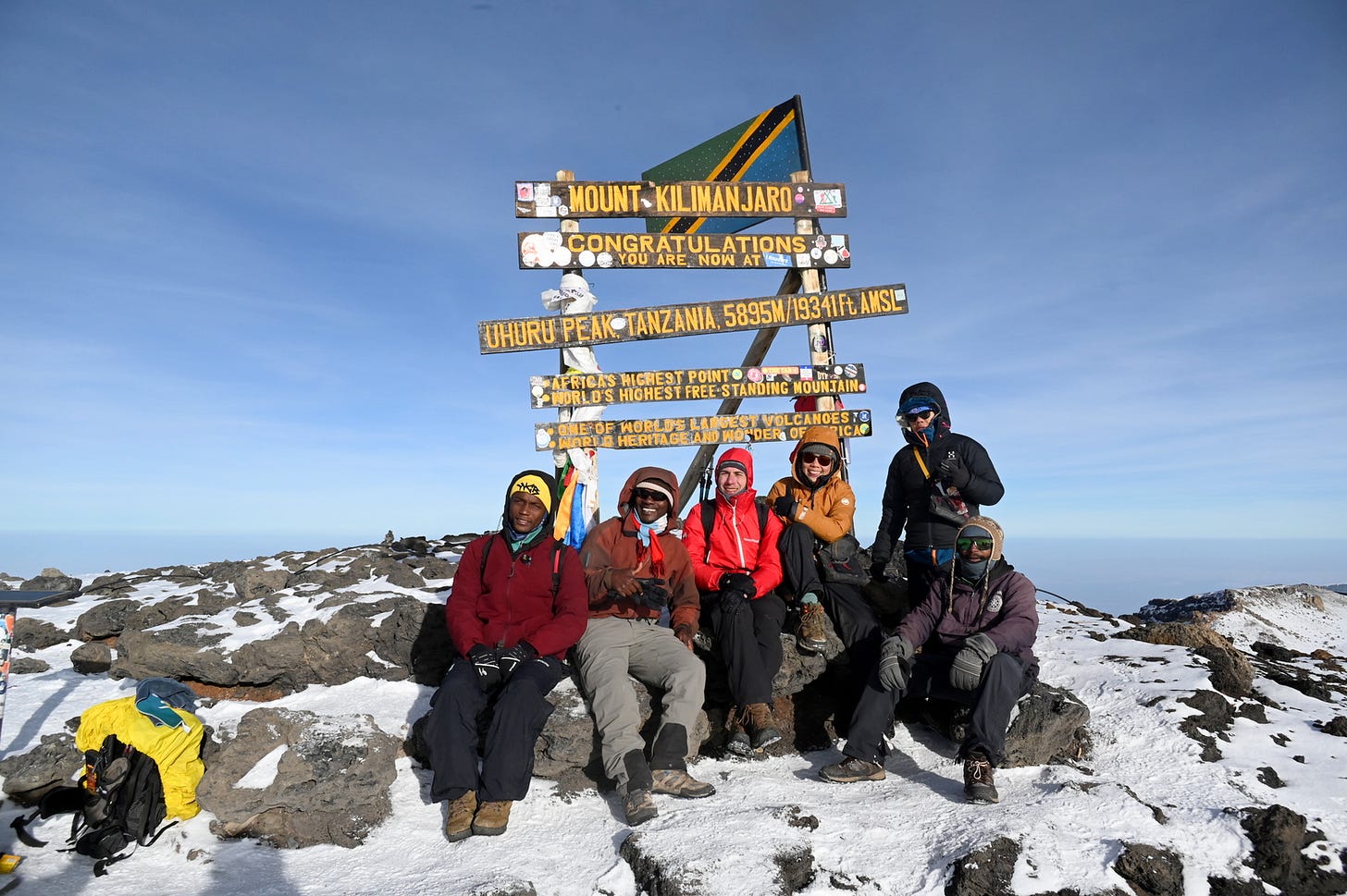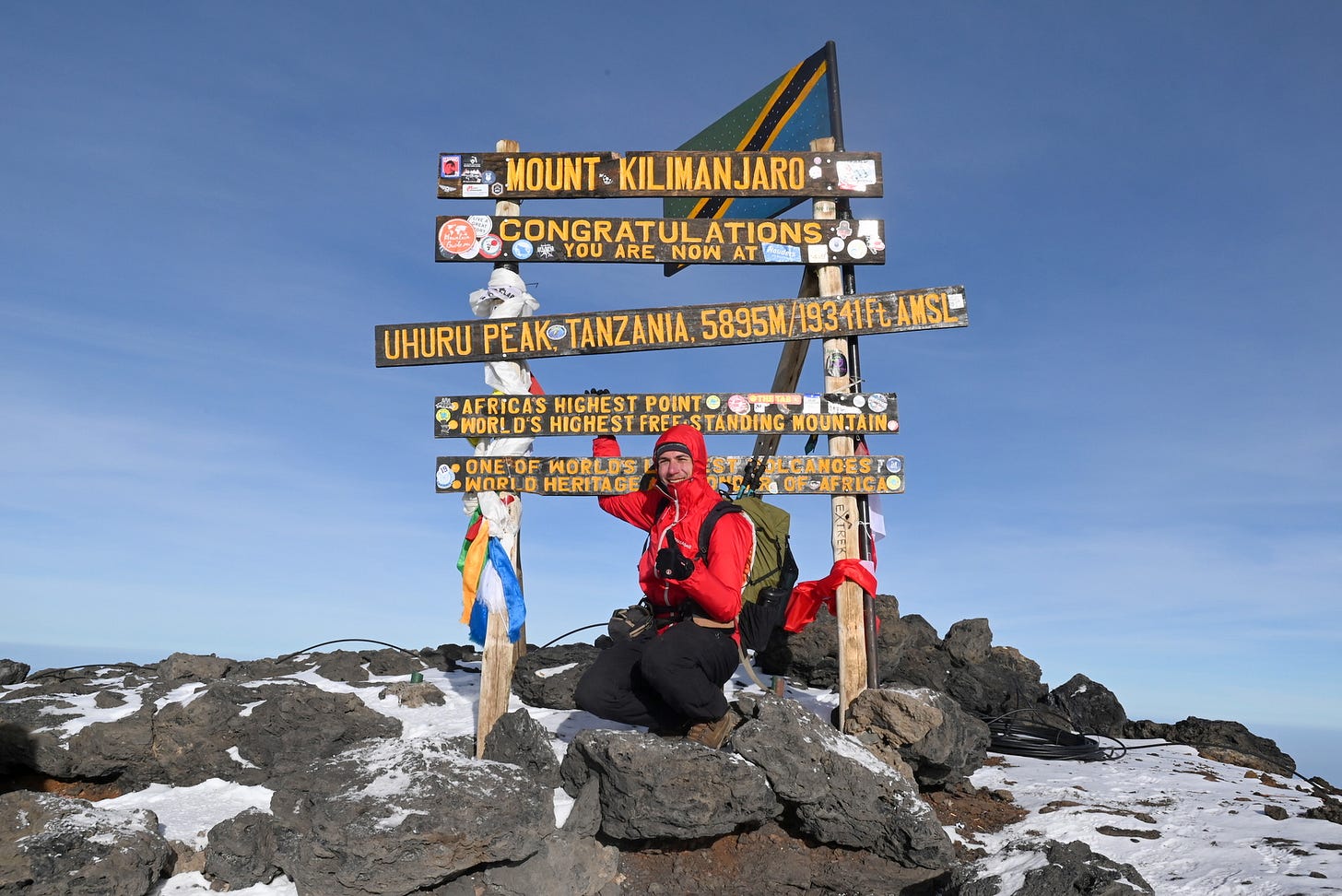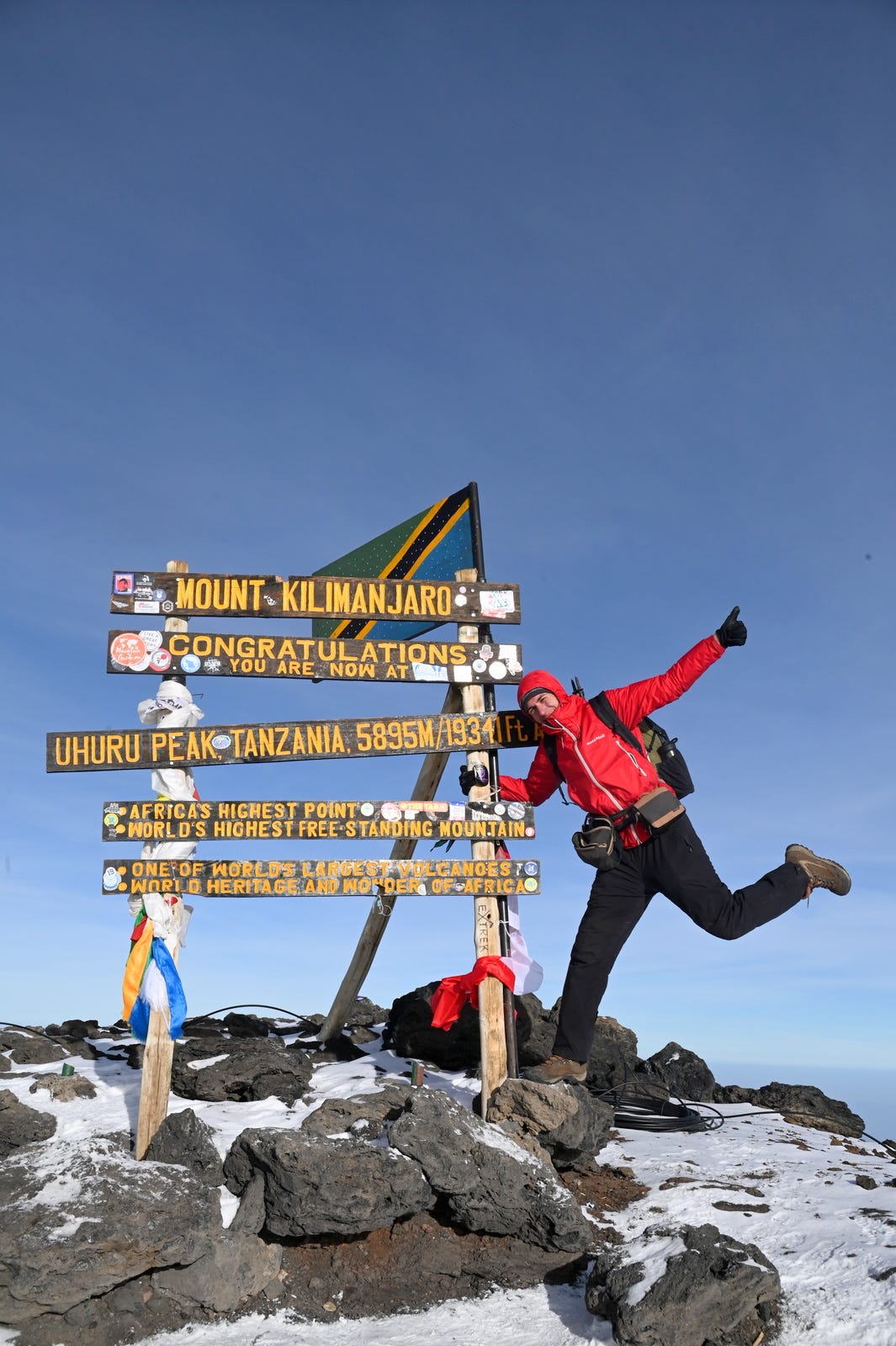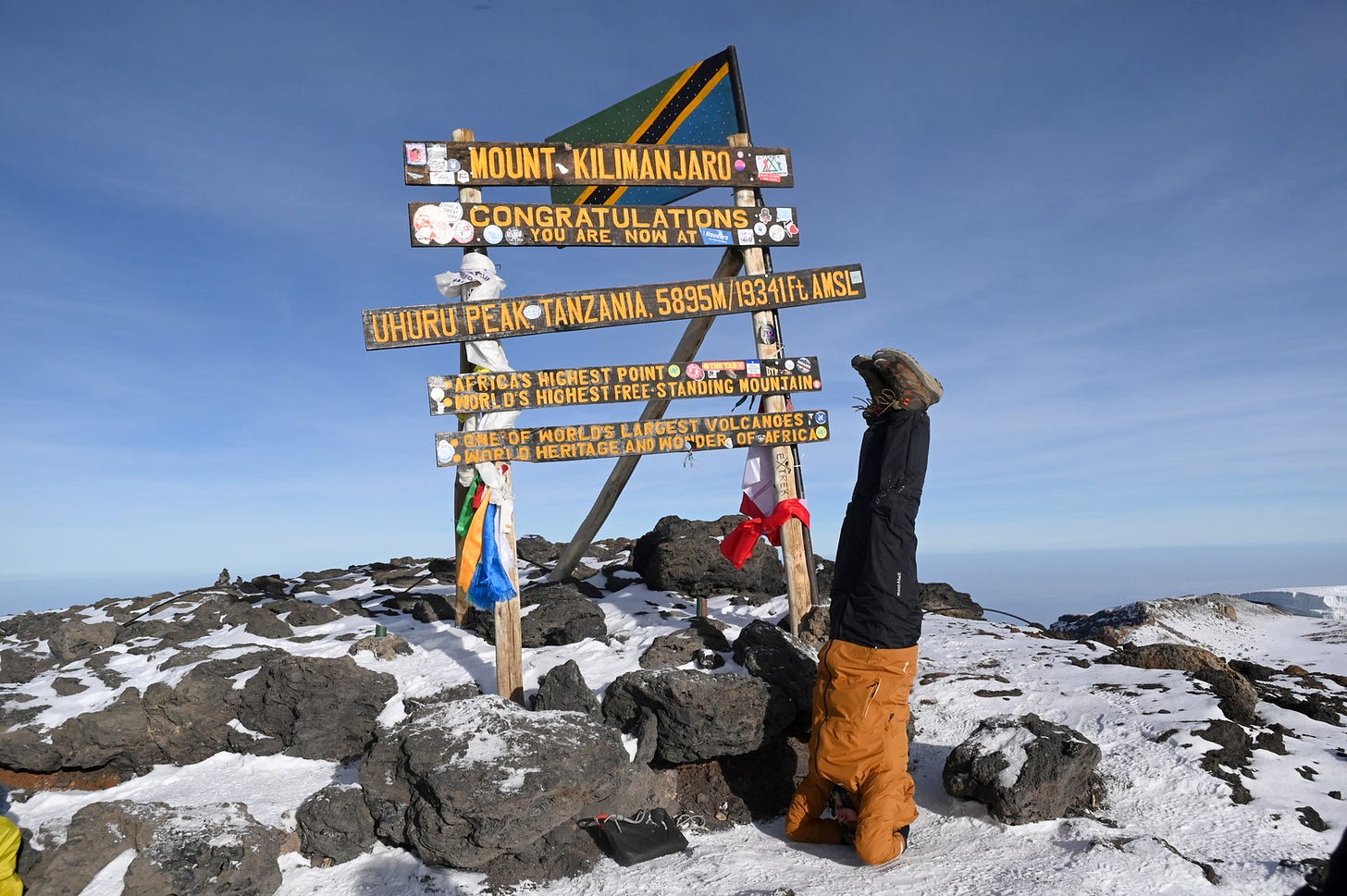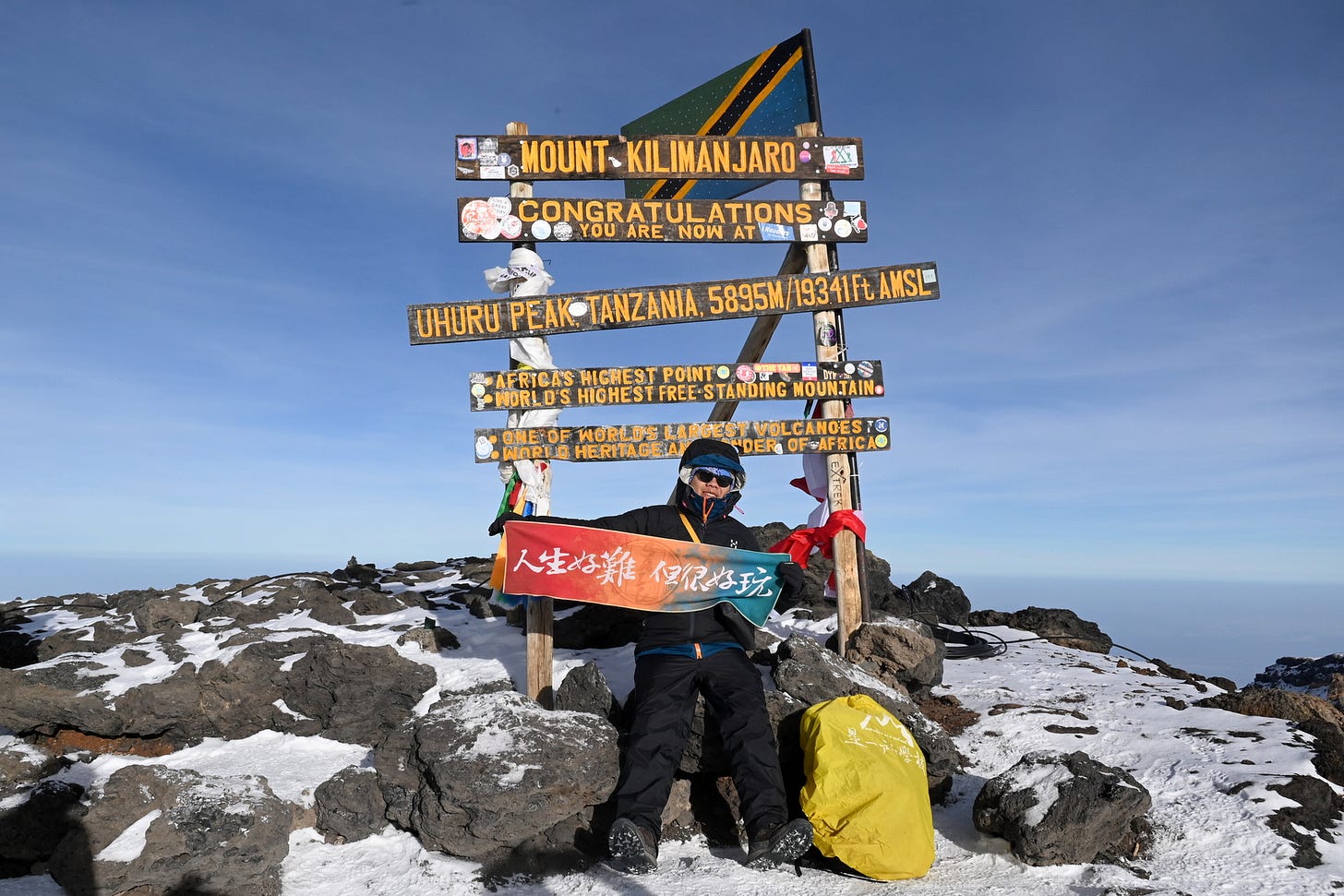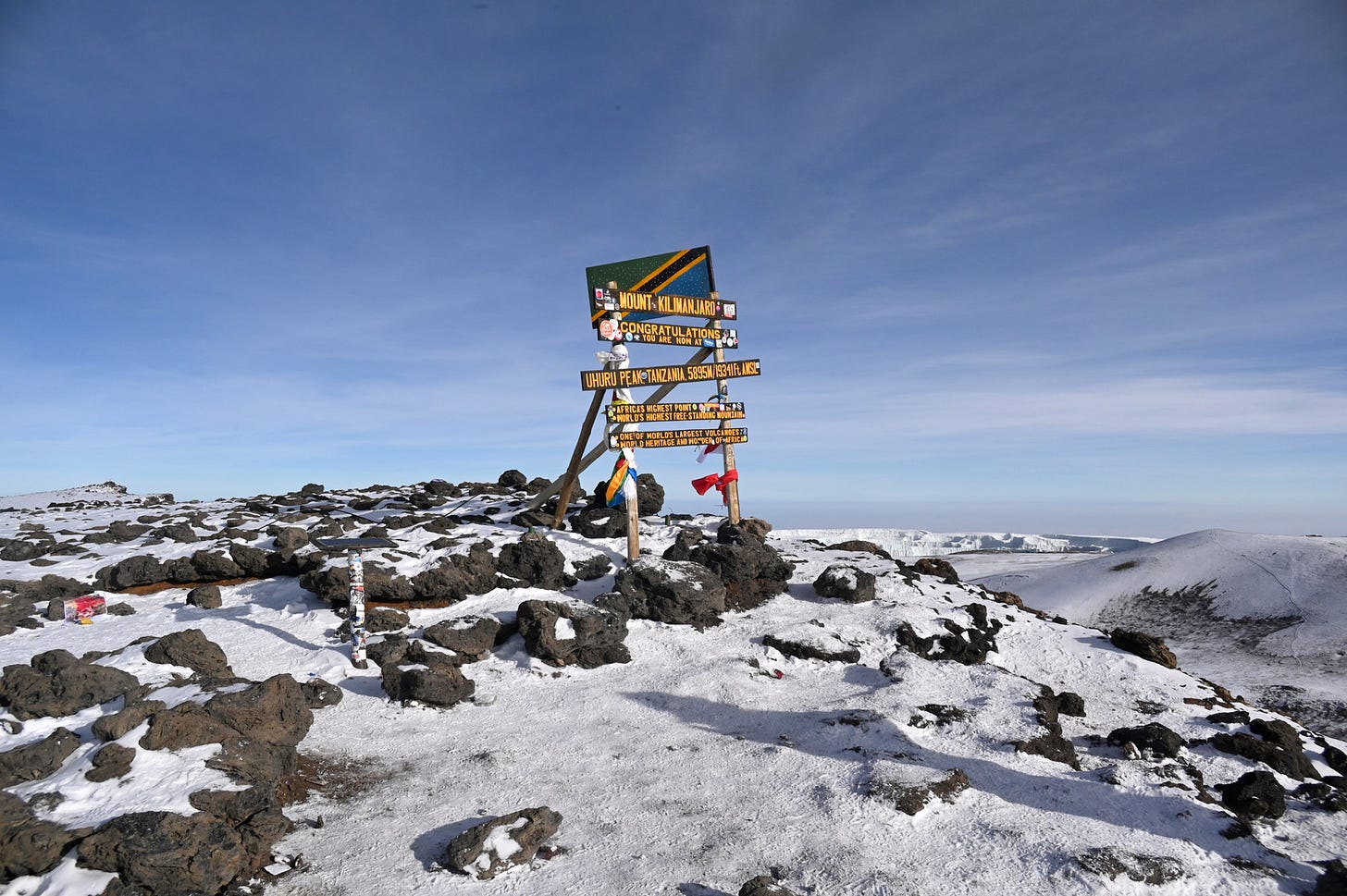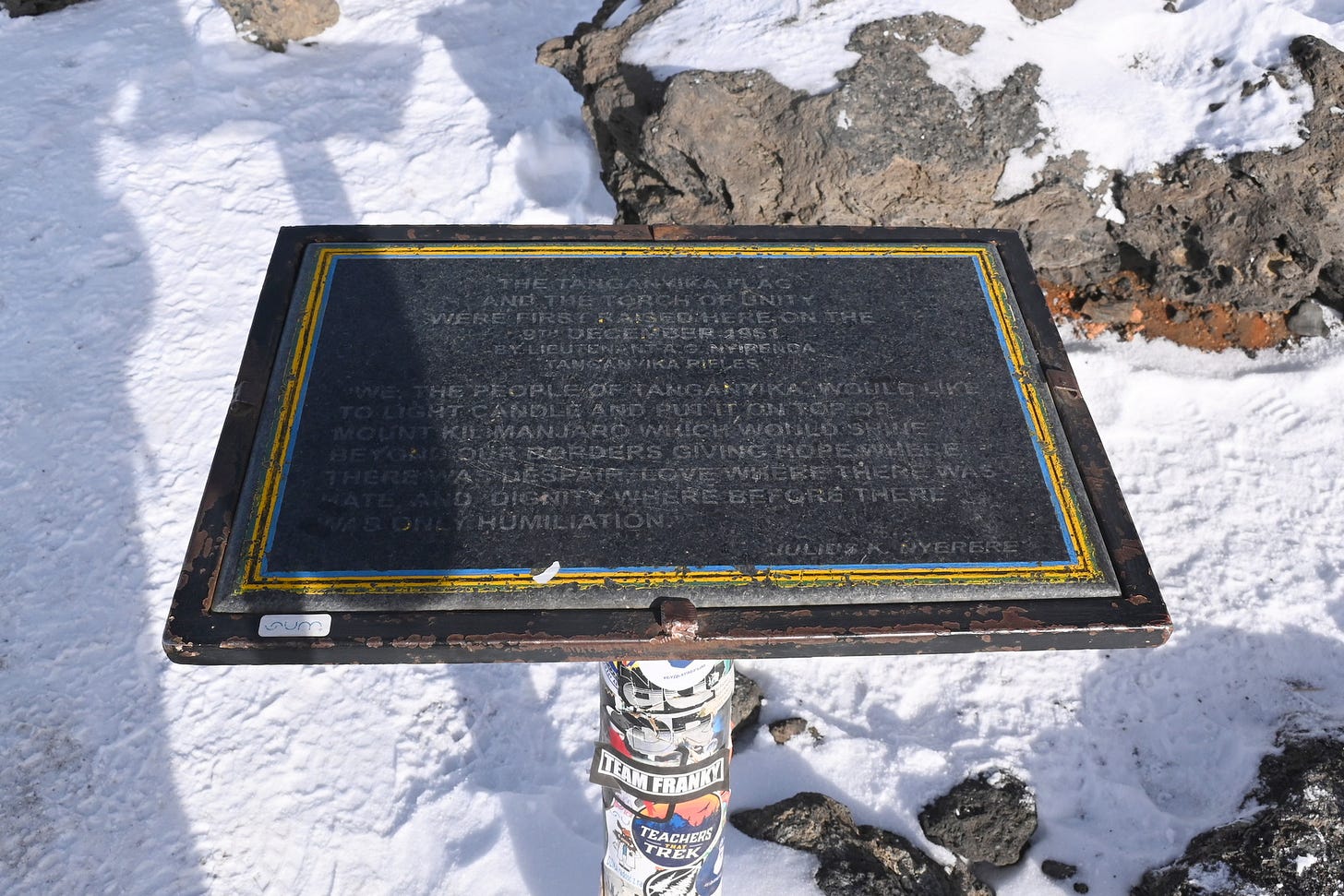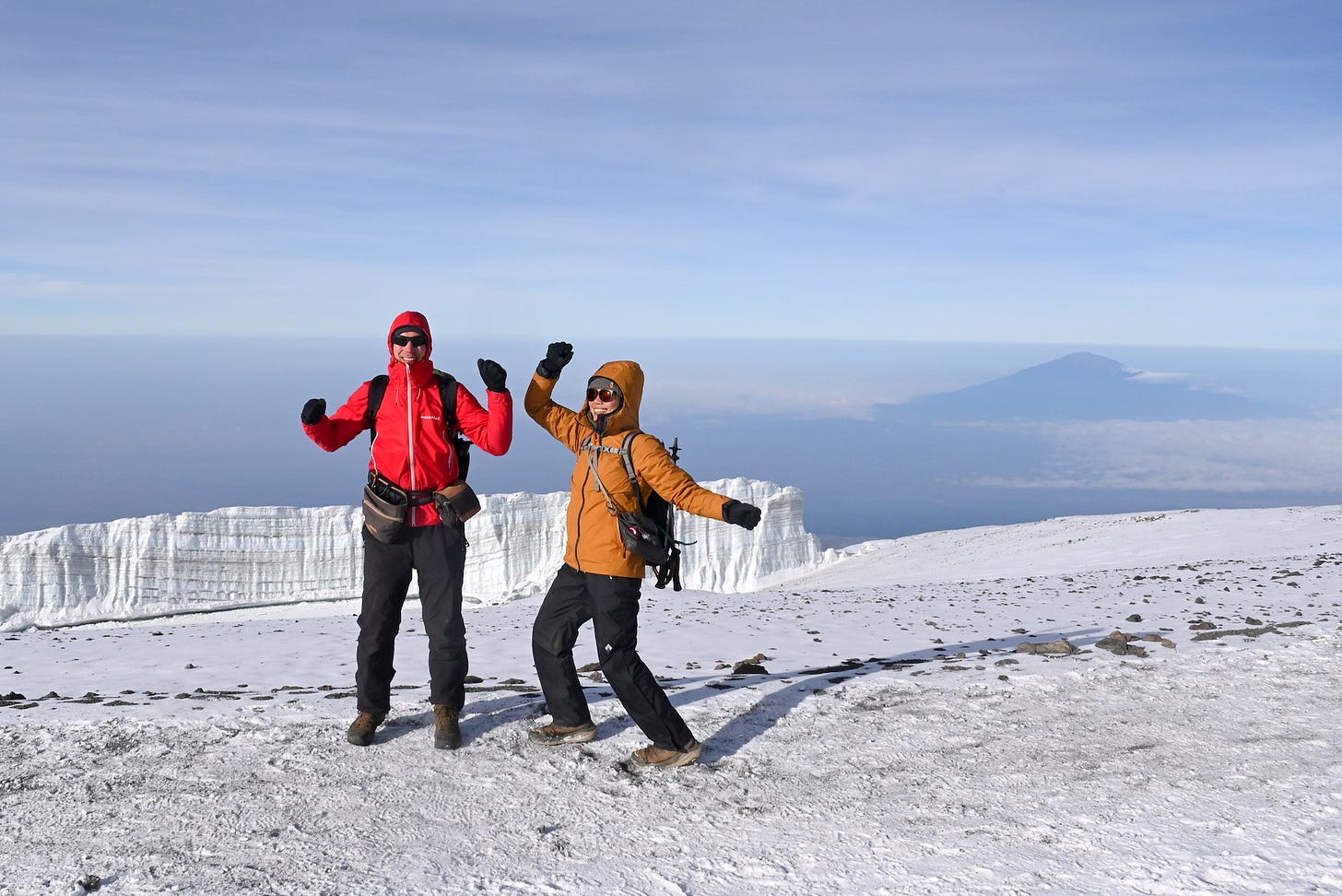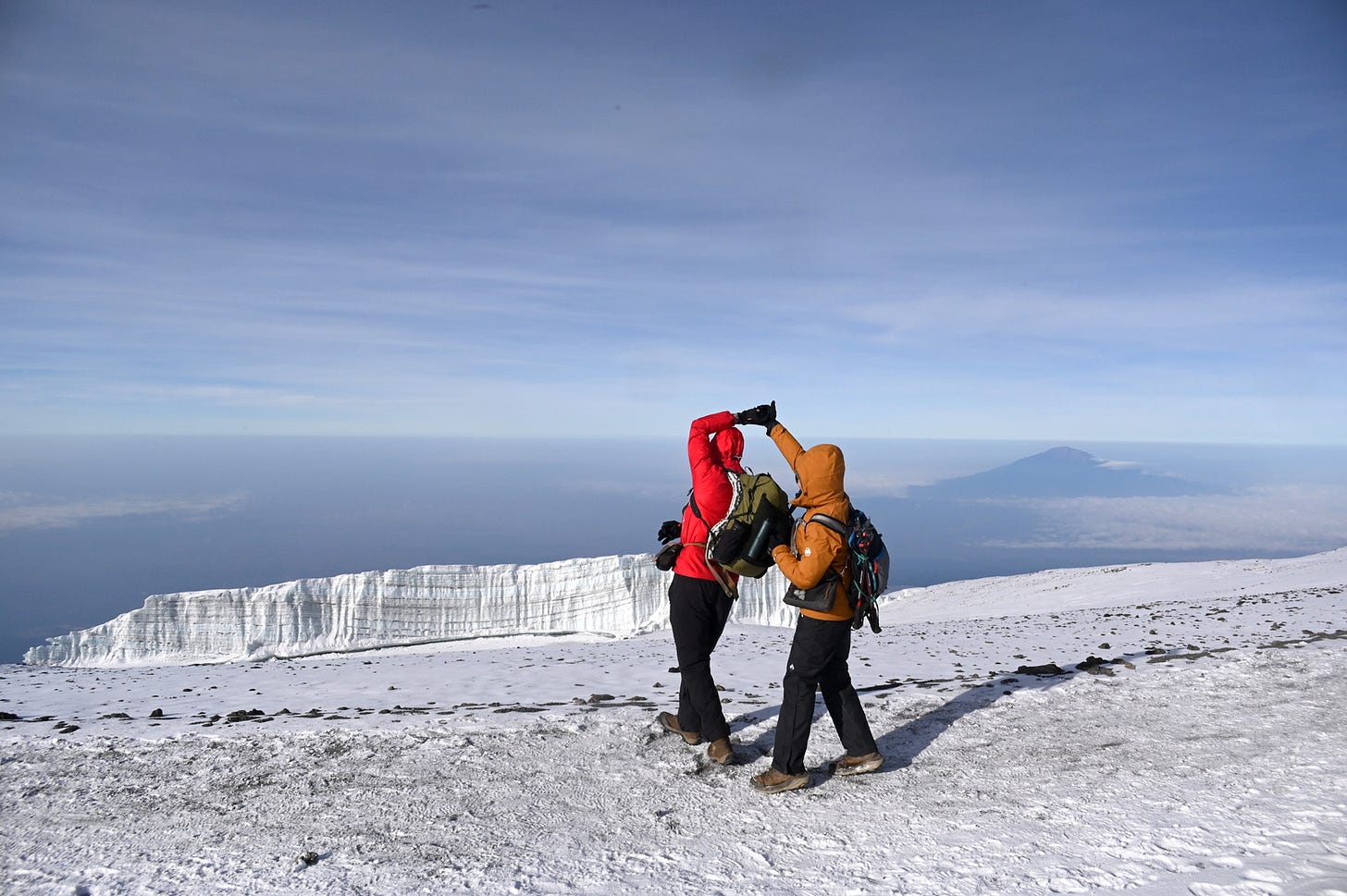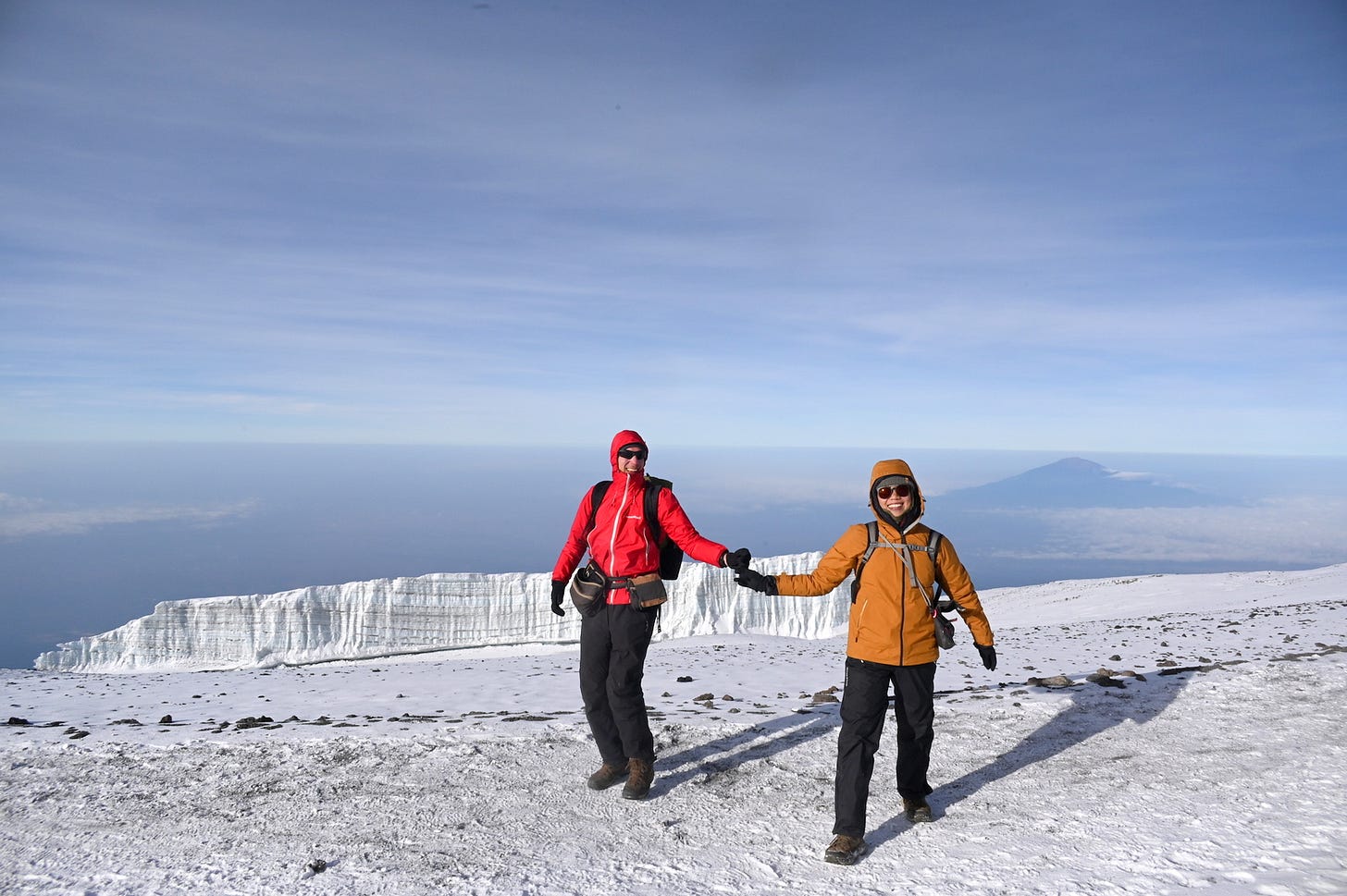Our call time was 23:00. Before that we had to change into summit clothes, pack the extra clothes into our day packs, and try to sleep. Between the altitude and excitement about the summit push I got at most one hour of sleep.
At 23:00 we got early breakfast in the mess tent: a pancake and some crackers. We also got some snacks for the road.
The day before Han asked, why do we need to start the summit push at midnight? As our guide explained, there are a number of reasons.
It’s a long climb and, psychologically, it’s easier when you can’t see where you’re going.
When the sun comes out, it gets warm, and the going becomes harder. You get thirsty faster and need to bring more water.
It’s going to be a long day.
At midnight, we set off. We were guided by the two guides, Apeles and Pumba, and Tumaini, the summit porter. The summit porter’s job was to do whatever is needed to give us the best chance of making it to the summit.
The six of us walked together. The guides led a quiet but steady chant to keep the team energized. Occasionally we stopped for a rest. When someone needed the toilet, they found a suitable spot.
Our guide told us: we will arrive at Stella Point around sunrise. So just check your watch. Don’t ask “are we there yet” because that just drains everybody. (This logic makes perfect sense: there’s no point arriving before sunrise.) But despite pacing to arrive at sunrise, we were slightly faster than most groups. Halfway in, it seemed we were in front with a chain of lights behind us.
Not all of us turned on the lamps on our heads. The guide in front did, and that light was enough to see the trail and the ground around it. With our eyes adjusted to the darkness, we could see the stars in the sky. The Milky Way was shining brightly behind us, and below it the lights of Moshi Town. This was my first time seeing the Milky Way above a city!
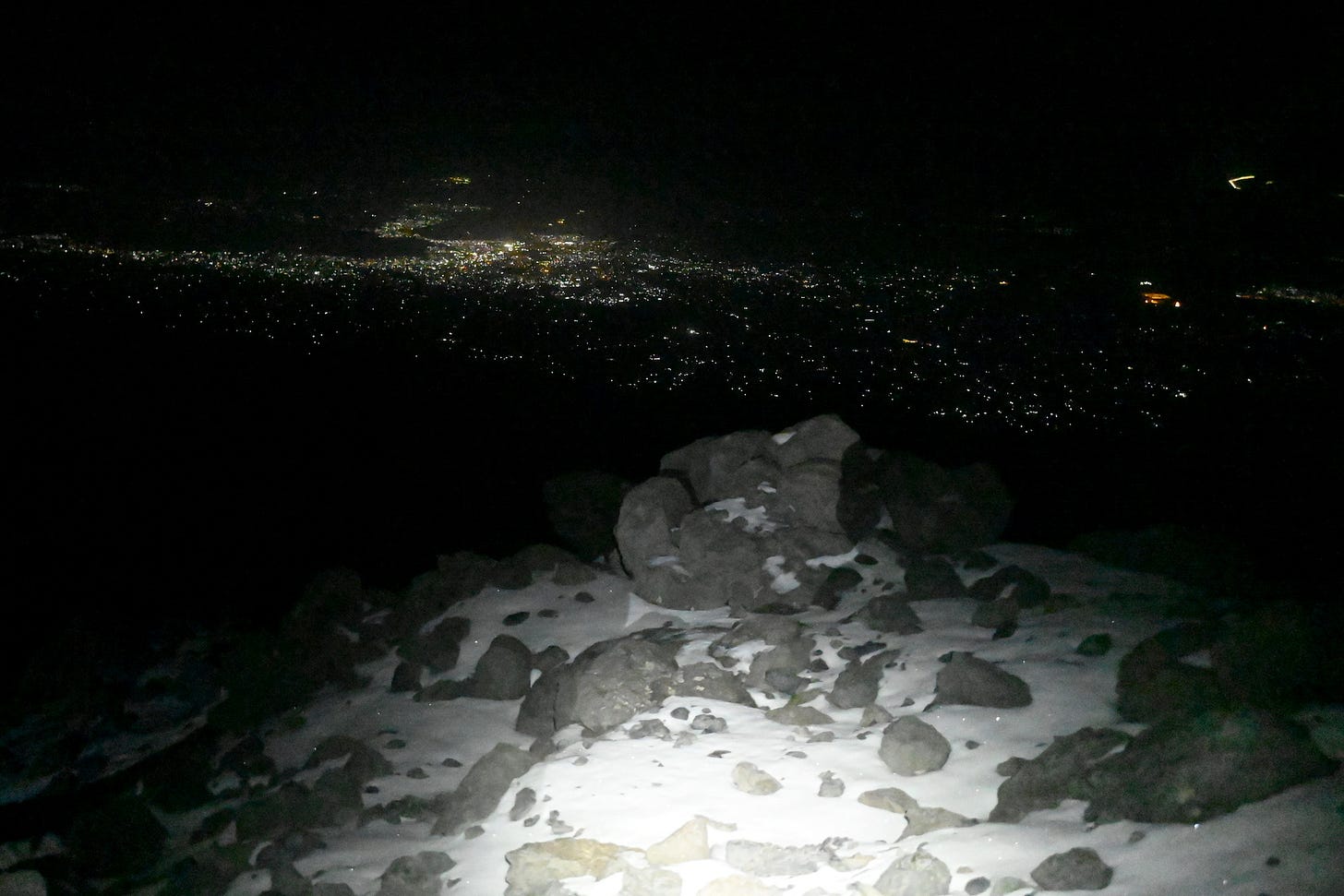
Pole pole wins the race. As the twilight of morning approached, we were almost to the crater rim.
At 06:25 we made it to Stella Point at 5756 m.
We could now see into the crater. Behind it was a glacier. Kilimanjaro still has glaciers, but they will disappear soon due to global warming. Every year, the amount of glacial ice decreases, which is a major reason not to put off this trip.
At 06:37 the sun rose directly above Mawenzi.
As night turned to day, we were walking up the crater rim toward the peak of Mt. Kibo (Kilimanjaro).
To our left there were glaciers - the remainders of the Southern Icefield. In the past, the trail would cross the icefield, but no longer.
Along the way, there was a great view of the crater.
And then another…
At 07:27, Han and I arrived at Uhuru Peak, 5895 m, the highest point of the African continent. Chang was still on his way.
The summit was quite crowded. After a few pics, it was the other teams’ turn.
Somebody proposed next to us.
Meanwhile, Han couldn’t wait for her turn at the sign again. Here she was in her favorite mountain peak pose.
At 7:50, Chang arrived, and we took more photos together.
We then moved to individual pics, so here I am being silly at the top of Africa.
Han did another headstand at the summit.
And Chang rolled out his banner that says “Life is so hard. But it’s so fun.”
Uhuru means freedom.
At 8:02 we started going back down. The guides warned us not to spend too much time at the top, but we were up here for a whole 40 minutes. And then for some reason we decided to dance.
I guess we were so happy to have made it here.
We were also lucky to see the peak and the crater covered with a blanket of snow. Walking in the rain the past two afternoons was worth it. According to the Taiwanese group whom we met in Karanga, when they summited a day after us, the snow was already gone.
In 2006 my family drove me to the top of Mt. Haleakalā in Hawai’i. It was my first time above 3000 m. In 2014, I hiked to Mt. Jade in Taiwan (3952 m). In 2017, Kala Patthar / Everest Base Camp in Nepal (5640 m). In 2023, Mt. Kilimanjaro in Tanzania (5895 m). Where next?

